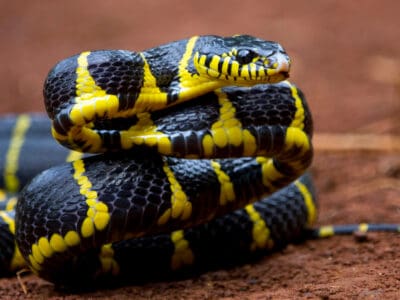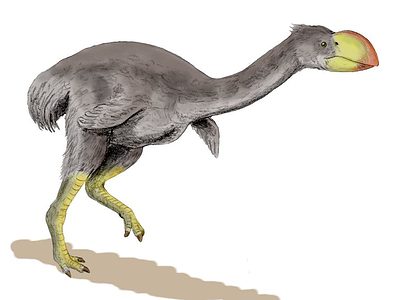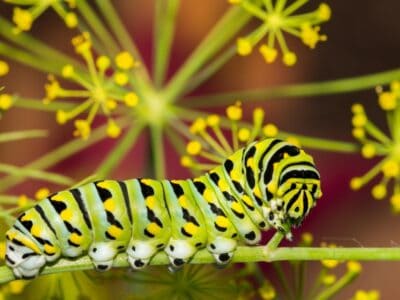Below you can find a complete list of Australian animals. We currently track 369 animals in Australia and are adding more every day!
Australia is the sixth-largest country in the world. It is also one of the driest continents on Earth. Its huge landmass offers a varied landscape of deserts, tropical rainforests, and mountain ranges, which provide a variety of habitats for animals in Australia. It’s famous for its Great Barrier Reef, the largest coral reef in the world. An island continent, it is surrounded by the Indian and Pacific Oceans. It includes the Australian mainland, the island of Tasmania, and other small islands.
Australia’s unique geographic position and centuries of isolation created ecosystems that are unlike any in the world. Of its flora and fauna, 84% of its mammals, 45% of its birds, 93% of its reptiles, and 90% of its fish are native to Australia. It has 755 species of reptiles, which is more than any country in the world. Read on to learn more about amazing Australian animals!
Unique Australian Animals
With so many species not found anywhere else in the world, Australia has a very rich and diverse animal population. Some of its most well-known and best-loved animals are its marsupials.
The kangaroo is synonymous with Australia. And there are a lot of them in the country — 30-40 million, and more than 55 different species, such as the Red Kangaroo, the largest marsupial on earth. They belong to a group of animals called macropods, which includes wallabies and tree kangaroos. Another macropod is the quokka, called “the world’s happiest animal” for its smiling expression and friendliness, which can be found mainly on Rottnest Island in Western Australia.
Koalas are recognized as distinctly Australian. Despite many calling them “koala bears,” they are not bears but are marsupials without a tail. They spend 18-20 hours a day sleeping to preserve the energy it takes to digest their fibrous diet (and it’s a myth they sleep so much because they are “drunk” on gum leaves!).
Australia is the only country where you can find the platypus, which is a monotreme, a mammal that lays eggs instead of bearing live young. Because it appears to have the body of a mole, the tail of a beaver, and the beak of a duck, when biologists first saw a platypus some of them thought it was a crazy, elaborate hoax and not a real animal. It’s also one of the few venomous mammals on Earth, as the male has poisonous stingers on its hind feet.
Burrow-dwelling and waddling wombats, frilled lizards – also known as frill-necked lizards for the “frill” skin flap that can extend like a fan to scare off predators, and lyrebirds, known for their ability to mimic virtually any sound, are all notable native Australian animals. Australia is also famous for its saltwater crocodiles and its venomous snake and spider species such as redbacks and Sydney funnel-webs. To learn about some of the deadliest animals in Australia, go here. Koalas are one of the best-loved and most recognizably Australian marsupials. ©rickyd/Shutterstock.com
What Is the National Animal of Australia?
The national animal of Australia is the red kangaroo (Macropus rufus). It’s also known as the red giant kangaroo, reaching over 6 feet tall, weighing around 190 pounds, and able to hop at 40 miles per hour. It is the largest land mammal native to Australia.
Red kangaroos are abundant in the country, found in most of the nation’s interior and along some of the northwestern coast. Their conservation status is “least concern,” however, like all wildlife they are protected by Australian law.
Male red kangaroos will engage in ritualized fighting over females and to show dominance in social groups. Famed for their boxing abilities, they use their arms to punch and legs to kick and destabilize their opponents. If a red roo loses a battle, they avoid close contact with other kangaroos and live alone.
The red kangaroo has been part of the Australian coat of arms since 1908. Kangaroos have been featured on currency, stamps, in the logos of companies such as national airline Qantas and notably in children’s TV series “Skippy the Bush Kangaroo.” The red kangaroo is Australia’s largest land mammal and its national animal.
©Benny Marty/Shutterstock.com
Which Animals Are Extinct or Endangered in Australia?
Despite its rich, unique biodiversity, Australia is at risk of losing many valuable species. According to Australian Geographic, it has the highest mammal extinction rate of any country in the world.
In 2021, 13 more species were listed as extinct under the Environment Protection and Biodiversity Conservation Act 1999, bringing the total number of extinct native species to 100. The update means that more than 10% of the 320 land mammals known to exist since Australia was colonized in 1788 are extinct. It’s probable that there are more species extinct in the wild, including several invertebrates, currently unaccounted for. The likely reasons for extinction are feral cats and foxes preying on animals and habitat loss and destruction due to fire.
The Thylacine, or Tasmanian tiger, is one well-known example of a species considered extinct in mainland Australia for more than 2,000 years and has not been seen for more than 70 years in Tasmania. This large carnivorous marsupial with a dog-like head was once widespread across the continent and it is thought to have been wiped out due to the introduction of dogs to its habits, competition with the dingo, and humans hunting it.
The summer bushfires of 2019-2020 in the southeast, from southeast Queensland to Kangaroo Island, had a catastrophic effect on Australia’s fauna and flora, and are believed to have killed more than a billion animals and resulted in numerous species becoming endangered.
Australia currently has more than 500 animals on the endangered species list, including the following.
- Koala: Koalas are listed as endangered, with population estimates ranging from 33,000 to 60,000, and their numbers are rapidly declining as much of their native habitat has been destroyed by land clearing and bushfires. The body tissue of most koalas contains chlamydia, which can make the animals sick when they are stressed by habitat loss, the threat of starvation, and dangers posed by cars and dogs.
- Spotted Quoll: This carnivorous marsupial has a spotted coat and a long snout. The quoll’s tendency to eat cane toads, mistaking them for native toads, partially caused its population decline. Conservation efforts to establish them on toad-free islands have shown success.
- Tasmanian Devil: Australia’s largest carnivorous marsupial, this sharp-toothed, cute critter is extinct on the mainland and found only in Tasmania. Since Tasmanian devils can protect themselves from foxes and cats, conservationists are hopeful about their chances of making a comeback.
- Black-Flanked Rock-Wallaby: This kangaroo-like marsupial lives in the rocky areas of the desert. The Australian government has listed the rock-wallaby as a priority for conservation efforts.
- Eastern curlew: The world’s largest shorebird depends on safe, protected wetlands to survive. This bird eats crabs and mollusks, but habitat loss has led to an 80% population decline.

Tasmanian devils now only exist on the island state of Tasmania.
©Dennis Jacobsen/Shutterstock.com
Native Birds
With around 850 species of birds, Australia is a birdwatcher’s paradise. Around 45% of these species are only found in Australia. The country has an especially high diversity of parrots, with more than 50 species, and the highest number of seabird species at around 80, in the world.
The laughing kookaburra is an iconic Australian bird known for its call. Magpies are one of the country’s most recognizable birds, known for their territorial swooping, as they dive toward people’s heads to protect their young from what they perceive as predators. Another species commonly found in urban areas is the galah, also known as the pink cockatoo, which has a shrill shriek and often gathers by the hundreds. A popular parrot species is the rainbow lorikeet, named for its colorful plumage. Another bird with a distinctive feature is the sulphur-crested cockatoo, which is white with a bright yellow crest.
One of the nation’s best locations for bird watching is Kakadu National Park. Here you’ll find more than 280 different types of birds, including lorikeets, red-tailed black cockatoos, white-bellied sea eagles, and crimson finches. Another notable birding location is the Daintree rainforest on the northeast coast of Queensland. More than 430 species of birds call the Daintree home. You can see several species of kingfishers, cranes, pied monarchs, and lesser sooty owls.
Other well-known birds native to Australia:
- Emu: Emus are the second-largest bird in the world and are found in a variety of habitats throughout most of Australia.
- Rock Parrot: Endemic to coastal habitats of Southern Australia, these mainly terrestrial parrots can be seen foraging in pairs and small flocks in the early morning and late afternoon.
- Little Penguin: The smallest species of penguin, they nest on Australia’s southern coastline. Phillip Island has the largest colony of Little Penguins in Australia.
- Cassowary: The heaviest bird in Australia, cassowaries are flightless birds closely related to emus. They are found in tropical habitats of North Queensland, including in the Daintree rainforest.
- Tawny Frogmouth: Often mistaken for owls, these birds are related to nightjars. They are found in a variety of habitats throughout the mainland. These nocturnal birds camouflage with branches during the day.

Kookaburras are famous for their call, which sounds like laughter.
©MPRshots/Shutterstock.com
National Bird of Australia
While Australia does not have an official national bird, many believe that the emu is a worthy representative. It is featured on the country’s coat of arms, alongside a kangaroo, symbolizing a forward-moving nation since both animals do not move backward easily.
The emu is a large, soft-feathered, flightless bird similar to an ostrich that can be found throughout Australia, although the Tasmanian, Kangaroo Island, and King Island subspecies have been extinct since colonization.
It can grow up to 6.2 feet tall, weigh up to 132 pounds, and reach speeds of 30 miles per hour, with a stride measuring up to 9 feet. These omnivores eat a variety of fruit, seeds, insects, and flowering plants, although they can last for weeks without eating. Emus don’t have any teeth, so they swallow small stones that help them grind up and digest food. They drink a lot of water, sometimes around 2.5 gallons daily, but are able to survive without water for 2 weeks if sources are scarce, as they take in moisture from their diet.
An emu’s lifespan is from 5 to 10 years in the wild and up to 20 years in captivity. Their main predators are dingoes, eagles, and hawks. Emus are solitary birds but when migrating to another area for food they can form groups of up to 20, which are known as mobs. They are usually not aggressive but can become so in the breeding season. The emu is the unofficial national bird and is featured on Australia’s coat of arms. ©iStock.com/Albert Wright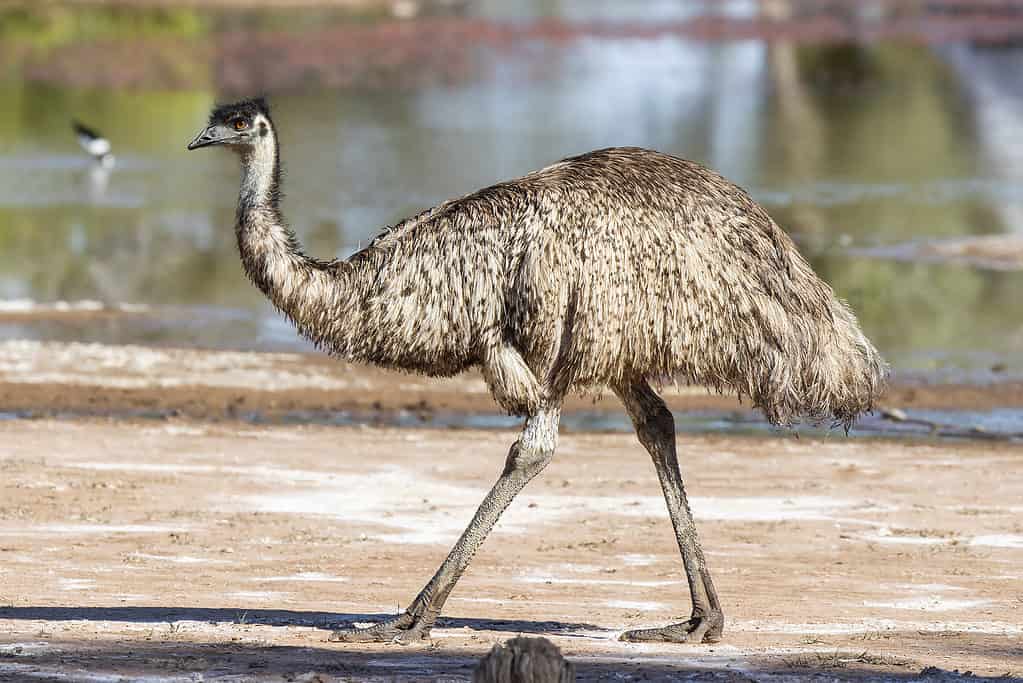
Australian Fish
Whether you’re looking to go sport fishing, scuba diving, or snorkeling, this island continent has something for you. It hosts more than 4,000 species of fish. Because Australia is such a dry continent, there aren’t as many freshwater fish species. Most of the approximately 300 species are found in tropical and subtropical habitats. Some of the most common types of freshwater fish in Australia are galaxias, perch, and gudgeons.
Australia’s marine fish diversity is incredible. A few of the most popular game fish in the country include barramundi, swordfish, marlin, tuna, and mackerel. Peak fishing seasons vary by species, but there’s always something to catch year-round. If you’re swimming in one of Australia’s famous coral reefs you might see clownfish, angelfish, parrotfish, manta rays, or butterflyfish.
Around 170 species of sharks, the world’s largest fish, can be found in the nation’s waters, with about 70 species believed to be endemic. The Coral Sea, off the coast of Queensland, has more than 50 shark species. Types of sharks in Australia include whale sharks, great whites, Port Jackson, grey nurse, zebra, tiger, bull, great hammerhead, and pygmy sharks. Sharks live in all habitats off the country’s coastlines, with the majority on the continental shelf, others in coastal waters, and some in rivers and estuaries. Due to a decline in the shark population, they are listed as “threatened.” Western Australia’s Ningaloo Reef is famed for its large congregations of whale sharks, and many people visit between March and July for a chance to swim with them.
One of the most well-known fish in Australia is the stingray, which was put in the spotlight when TV show host and conservationist Steve Irwin was fatally injured by a stingray’s venomously-barbed tail in a freak accident in 2006. However, stingrays are not actively aggressive, only attack when threatened, and actually have a friendly and playful temperament.

Whale sharks are abundant in the Ningaloo Reef of Western Australia.
©iStock.com/crisod
Australian Snakes
Australia is known for its animals that can kill you, and its snakes don’t disappoint. 20 of the 25 most venomous snakes in the world are native to Australia. It also has more species of reptiles than any other country in the world. There are around 140 species of land snakes and 32 species of sea snakes.
Snakes can live in all types of environments in Australia except the highest altitudes, which are too cold for these reptiles to thermoregulate. Most of the venomous snakes are found in South Australia, as the state experiences large amounts of sun but also has enough cover for protection.
The most venomous snake in the world, the inland taipan, is present in Australia. Fortunately, it’s rarely encountered in its semi-arid habitats of east central Australia. There are two other species, coastal taipans and central ranges taipans. The longest snake in Australia is the amethystine python, which lives mainly in the rainforests of Queensland and grows up to 19 feet long.
Some notable types of snakes found in Australia include:
- Brown Snakes: These are one of the best-known snakes in the country. There are nine species of venomous brown snakes, with the Eastern Brown Snake being the second most venomous snake in the world.
- Tiger Snakes: Identified by the region of their habitat, some species of tiger snakes include the mainland tiger snake (also known as the common tiger snake), western tiger snake, Chappell Island tiger snake, King Island and Tasmanian tiger snake, and Peninsula tiger snake.
- Pythons: There are 15 species of pythons ranging throughout most of Australia, including the carpet python, children’s python, green tree python, and woma python.
- Sea snakes: All species of sea snakes are venomous, but bites are extremely rare. Species include the yellow-bellied sea snake, olive sea snake, and the banded sea krait.
- Death Adders: There are around eight species of death adders in Australia. The common death adder is one of the most venomous snakes in the country and is the fastest snake on Earth.
While many snakes’ bites are poisonous, they occur rarely, and fatalities have been low, at 4-6 deaths per year, especially since anti-venom was developed. Most snakes would rather avoid humans than attack them, as they don’t think of people as food sources and don’t bite out of malice. Australia is home to the inland taipan, which is the most venomous snake known.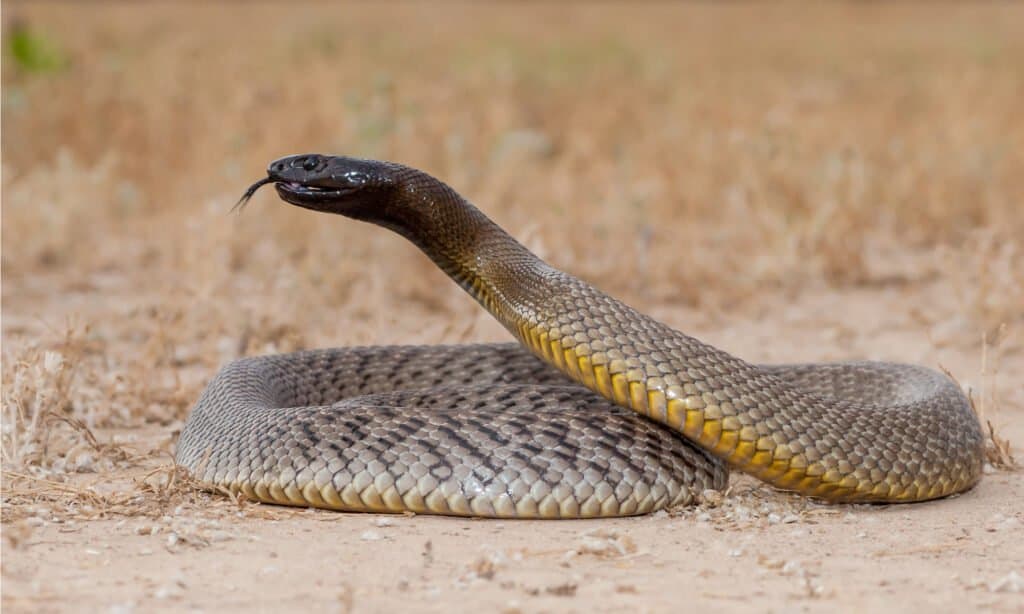
©Ken Griffiths/Shutterstock.com
The Flag of Australia
The flag of Australia features a dark blue background with the Union Jack representing Australia’s history with Great Britain. Below the Union Jack is a star with seven points signifying unity amongst the country’s states and territories. The Southern Cross in white is a constellation of five stars visible from the night skies that also serves as a reminder of Australia’s geography.
Australia’s flag was the first national flag to be created by a country’s citizens. The 1901 Federal Flag Design Competition was open to the public and more than 32,000 entries were received. The winners were five very similar designs by four Australians (two teenagers) and one New Zealand man. A simplified version was submitted to the British admiralty for entry into their register of flags, with the design officially recognized in 1903.
The flag has historically been a controversial issue for Australians, with some seeking to change the design and others desiring it to remain as is. There have been pushes, notably by the republican movement who wish to replace the British monarch as Australia’s head of state with a republic, for a new flag design that does not include the Union Jack. Another argument for change is that the flag is too similar to neighboring New Zealand‘s flag, which also has the Union Jack but represents the Southern Cross as four red stars within white borders. There have been calls to replace the Union Jack with that of the back, red, and yellow Australian Aboriginal flag in recognition of indigenous Australians.
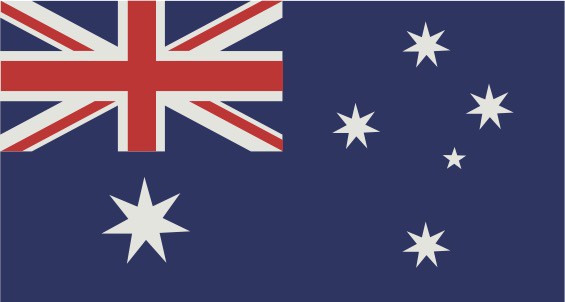
The Australian flag incorporates the Southern Cross constellation.
©iStock.com/29mokara
National Parks in Australia
Visiting a national park is one of the best ways to learn about a country’s landscape, flora, and fauna, and Australia has everything from deserts and sandy beaches to rainforests and grasslands in its abundant, beautiful national parks.
One of the best-known national parks is Uluṟu-Kata Tjuṯa National Park in the Northern Territory. This UNESCO World Heritage-listed park is home to Uluṟu, once commonly called Ayers Rock. A large sandstone formation in the center of Australia, it is one of the nation’s most recognizable landmarks, famous tourist destinations, and most culturally significant sites to indigenous Australians, sacred to the Pitjantjatjara, the Aboriginal people of the area. Also within the park is Kata Tjuṯa, known as the Olgas, which is a group of 36 domed rock formations.
Kakadu National Park is another well-known World Heritage-listed national park in the Northern Territory. It is Australia’s largest national park, consisting of more than 7,000 square miles of rainforests, wetlands, waterfalls, billabongs, and ancient indigenous rock art.
Kosciuszko National Park in New South Wales is named for mainland Australia’s highest peak, Mount Kosciuszko. It has 1.7 million acres of rugged mountain and wilderness, and the Thredbo-Perisher area is a popular spot for skiers, snowboarders, mountain bikers, and hikers.
Daintree National Park in Queensland has the oldest tropical rainforest on Earth, housing more rare and threatened species than anywhere else in the world. More than 400 bird species, 12,000 insect species, and tree species believed to be extinct can be found there. For more information about Australia’s national parks, head here. The Daintree Rainforest in Australia is the oldest tropical rainforest in the world.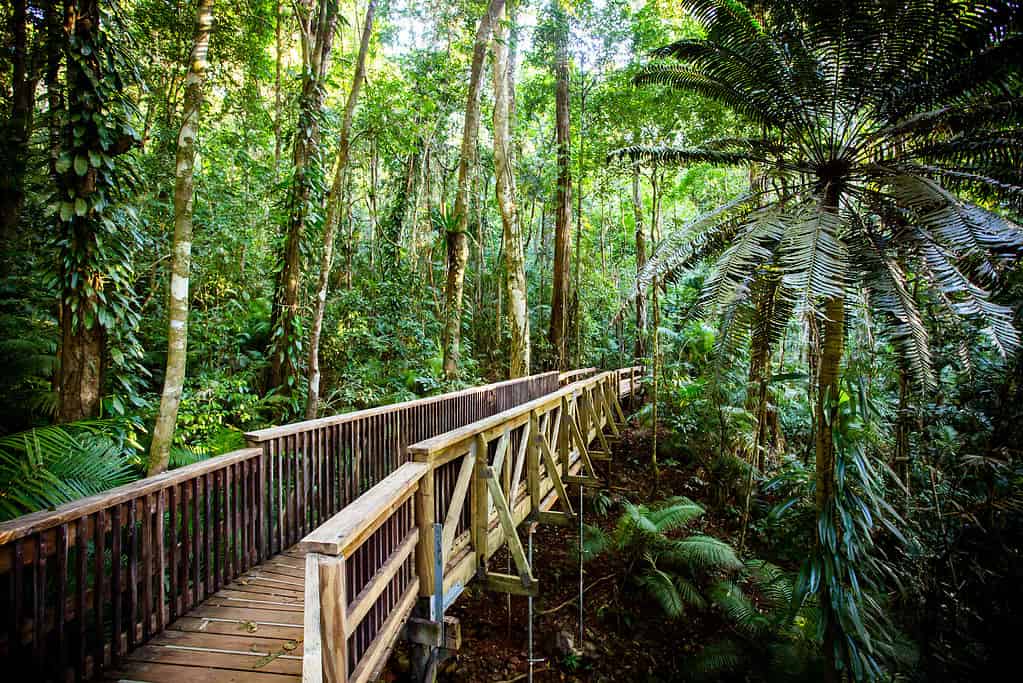
©iStock.com/FiledIMAGE
The 5 Rarest Animals in Australia
As more than 80% of its mammals and reptiles are unique to Australia and with more than 500 animals on the endangered species list, it’s not surprising that the country has a number of animals that can rarely be seen in the wild. Here are five of the rarest and most endangered:
- Silver-Headed Antechinus: This tiny shrew-like marsupial is so rare that up until 2013 no one knew they existed! They were found nesting in the wet eucalypt and rainforests of central Queensland, and only 2,500 are believed to exist in the wild. Their numbers have been reduced by fire destroying their habitat, leading to a lack of food sources, and due to the species being suicidal reproducers, meaning the males die once they finish mating.
- Kangaroo Island Dunnart: With around 30% of Kangaroo Island devastated by the 2019-2020 bushfires, these carnivorous marsupials found only on the island were pushed nearer to extinction and now less than 50 are thought to be alive in the wild. Conservation groups are working to protect the species and efforts include creating a refuge area that is free of predators such as feral cats.
- Orange-Bellied Parrot: One of the rarest species in the world, there are only about 50 of these parrots left in the wild. Habitat loss, the reduction of food sources due to the spread of noxious plants and increased competition from other birds, and threats from foxes and cats have all led to this species becoming critically endangered.
- Numbat: Also called the banded anteater, this small termite-eating marsupial has become rarer over the years to see in the wild. It used to be widespread across the country, but is now only found in Western Australia, where it is the official state animal. With the main threat to numbats from foxes, cats, and birds of prey, conservationists are protecting populations in wildlife sanctuaries. A 2022 study estimates there are 1,900 numbats in existence, twice as many as previously thought.
- Mountain Pygmy-Possum: Fewer than 2,000 of these tiny marsupials exist in the wild, so it is very hard to spot them in New South Wales and Victoria. Habitat loss has contributed to their decline as they live in areas also home to ski resorts. Climate change leading to shorter winters and less snow has greatly affected their ability to hibernate under the snow for up to 7 months a year.

Once widespread, the numbat, also called the banded anteater, now only exists in Western Australia.
©Ken Griffiths/Shutterstock.com
The 5 Largest Animals in Australia
With such a huge diversity of animals found on land and in its waters, Australia can be expected to have some of the biggest species on Earth. Read on for some of the largest.
- Whale Sharks: The UNESCO World Heritage-listed Ningaloo Marine Park in Western Australia is one of the only places in the world where whale sharks, often numbering up to 400, reliably gather every year in search of plankton and krill. The world’s largest fish can weigh up to 20 tons and grow up to 65 feet in length, although those seen at Ningaloo generally measure up to 39 feet long. Whale sharks have also been sighted in waters off the Northern Territory and Queensland, with isolated reports of some in Victoria and New South Wales.
- Humpback Whales: Humpbacks can reach 52 feet and weigh up to 45 tons, and Western Australia’s waters are home to more than anywhere else on the planet. It has one of the longest whale-watching seasons in the world and each year from May to December approximately 45,000 migrate along the coast. Humpback whales also can be found off the eastern coast of Australia, when whales travel north from Antarctic waters after a summer feeding on krill to breed and give birth, with coastal towns such as Byron Bay and Hervey Bay popular whale-watching spots.
- Killer Whales: The largest congregation of killer whales in the Southern Hemisphere gathers near Bremer Bay in Western Australia due to the abundance of prey available. Between January and April reliably every year, more than 150 of the apex predators, also known as orcas, can be seen in these waters. Male killer whales can grow to 32 feet long and weigh up to 6 tons.
- Saltwater crocodile: The world’s largest reptile, which is capable of reaching lengths of over 23 feet and weighing over 2,200 pounds, lives in Australian coastal waters, estuaries, lakes, inland swamps, marshes, and despite its name, freshwater bodies. It can be found throughout coastal Northern Territory, where it’s estimated there are more than 100,000, and in Queensland and Western Australia. Read about what might happen in a confrontation between a human and a crocodile here.
- Kangaroo: The red kangaroo is not only Australia’s national animal, it’s the largest marsupial in the world. With a maximum height of 6 feet and weight of 200 pounds, these kangaroos also boast tails that can reach 3 feet long. Kangaroos can develop muscular physiques through kicking and boxing, and one of the most muscular in the world was “Ripped Rodger.” Rodger was 6 feet 7 inches tall, weighed 200 pounds, and lived at The Kangaroo Sanctuary in Alice Springs until his death in 2018.
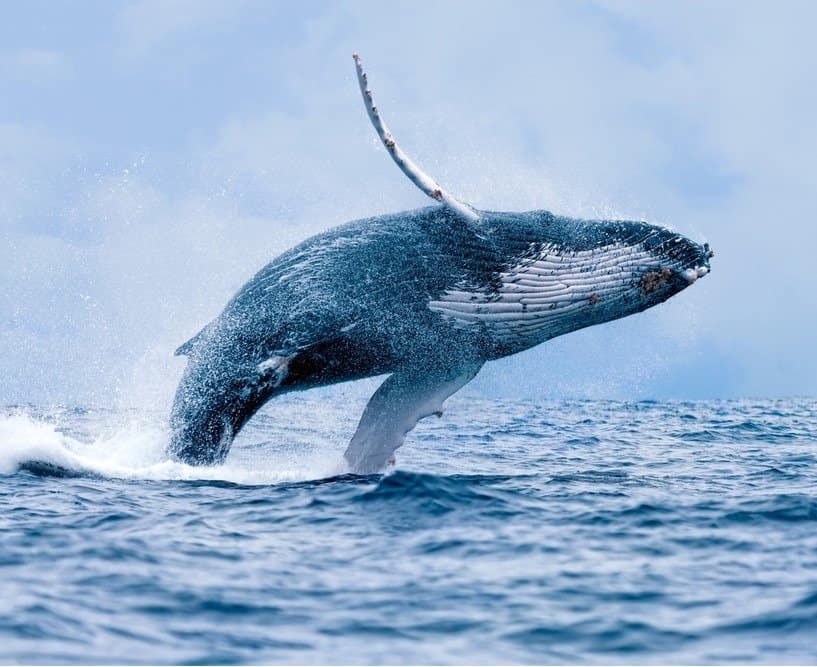
Humpback whales can weigh up to 45 tons and are found off the western and eastern costs of Australia.
©Paul S. Wolf/Shutterstock.com
Australian Animals
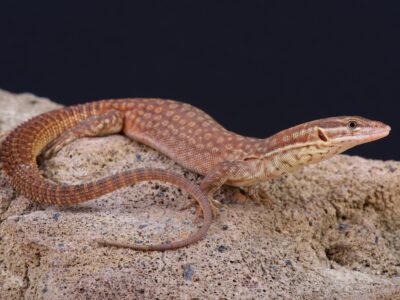
Ackie Monitor
The ackie monitor has a spiny tail which it uses as in self-defense.

Admiral Butterfly
Stunningly beautiful wings
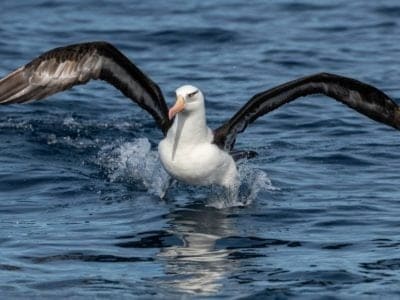
Albatross
The largest wingspan of any bird in the world!

Allosaurus
Differnt Lizard” or Allosaurus weighed around two tonnes that is almost equal to a car.
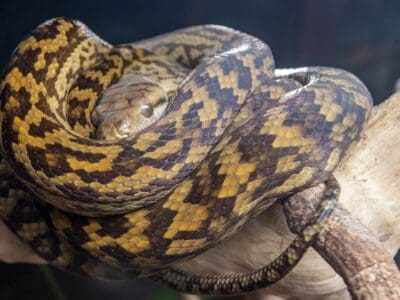
Amethystine Python (Scrub Python)
Their milky-iridescent scales have a purplish hue in the light, reminiscent of the gemstone.
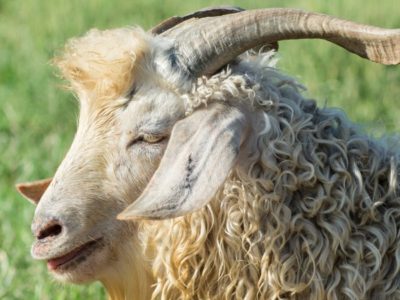
Angora Goat
Each adult Angora goat produces about 12 inches of mohair annually while kids have about 8 inches.

Ant
First evolved 100 million years ago!
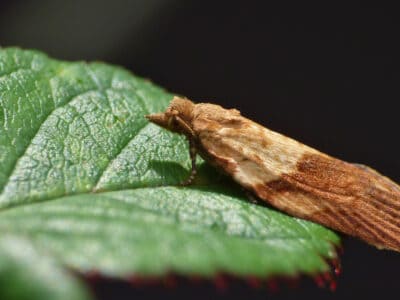
Apple Moth
In Australia the LBAM causes $21.1 million annually in lost production and control costs

Arafura File Snake
These snakes have rough, file-like skin.
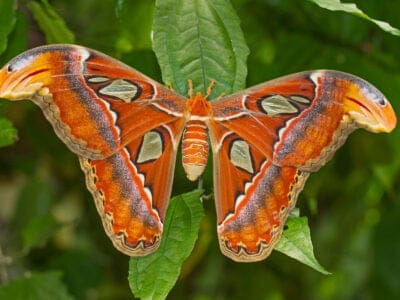
Atlas Moth
Adult atlas moths do not eat - they live off fat they stored as larvae.
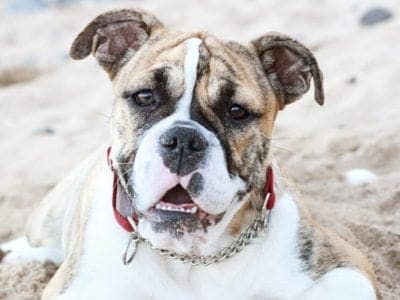
Australian Bulldog
The Aussie is a strong swimmer, a good workout in nice weather.

Australian Cattle Dog
High energy levels and active minds!
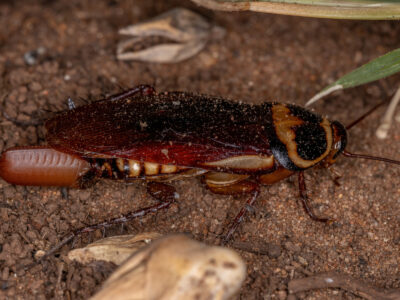
Australian Cockroach
The most common type outdoor roach in Florida
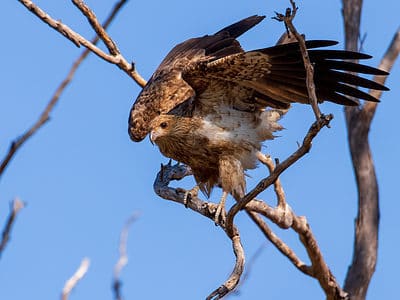
Australian Firehawk
Australian firehawks are the arsonists of the avian world!
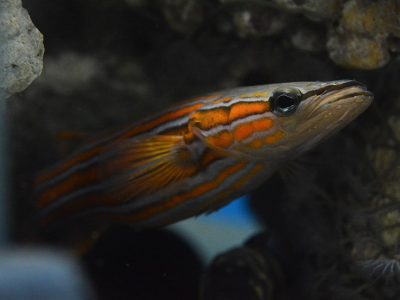
Australian Flathead Perch
This small fish fetches a high price tag, with individuals selling from $1,000 to $5,000.
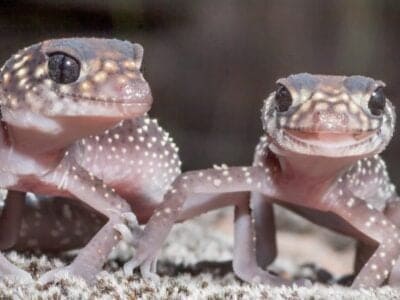
Australian Gecko
Geckos have 100 teeth and continually replace them.
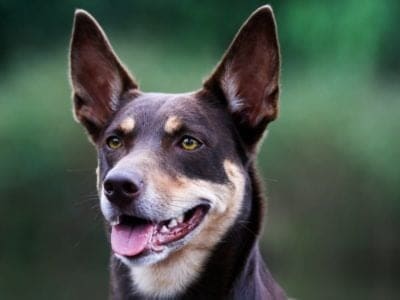
Australian Kelpie Dog
Friendly, intelligent and energetic!

Australian Labradoodle
The "Australian" just refers to where the breed originated

Australian Mist
The only cat breed to originate in Australia.
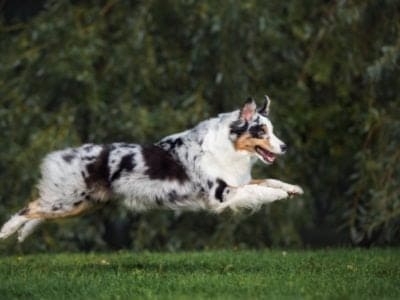
Australian Shepherd
Sweet, faithful and affectionate!
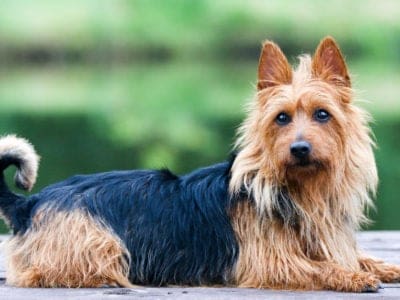
Australian Terrier
Spirited, alert and courageous!
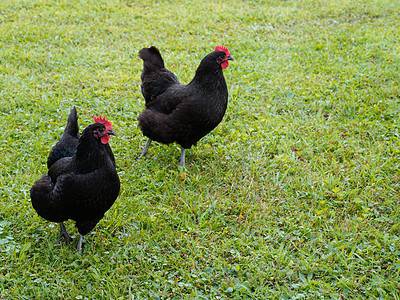
Australorp Chicken
Australorp chickens are among the best egg producers in the world, Hens in Australia set consecutive world records with one laying 364 eggs in a single year!

Avocet
Has a curved, upturned beak!

Banana Spider
People spin clothing and fishing nets out of these spiders’ silk.
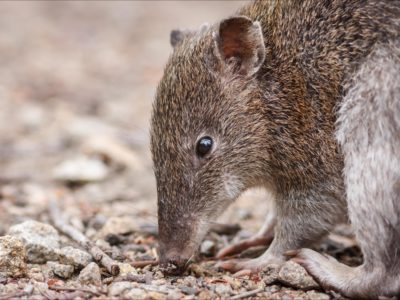
Bandicoot
Bandicoot Many species are endangered or extinct!

Barn Owl
Found everywhere around the world!

Barn Swallow
Older offspring help care for new hatchlings.

Bass
Prized by sport fishers for their size and strength

Bat
Detects prey using echolocation!

Beaglier
These dogs have great sniffer abilities
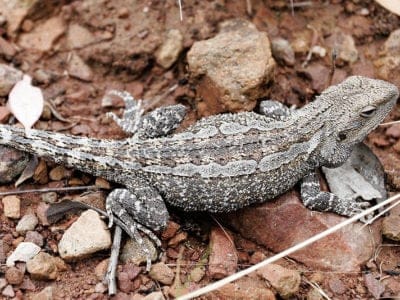
Bearded Dragon
Can grow to up 24 inches long!

Bed Bugs
Bed bugs feed for 4-12 minutes.

Bee
Rock paintings of bees date back 15,000 years
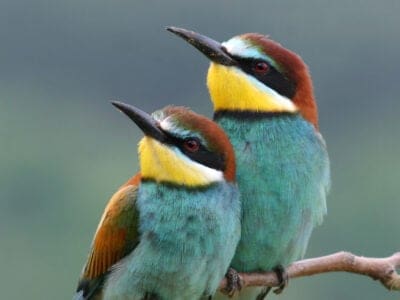
Bee-Eater
They roll around in dirt to prevent external parasites

Beetle
There are more than 350,000 different species

Bichpoo
Despite its small size, the alert nature and sharp bark of this canine make it a good watch dog.
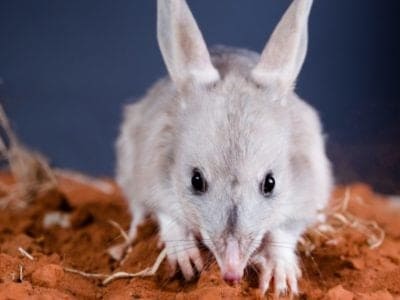
Bilby
In Australia, the chocolate bilby replaces the chocolate bunny for Easter.

Bird
Not all birds are able to fly!
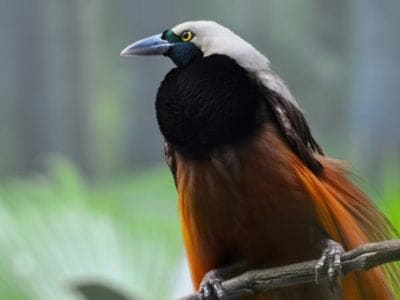
Bird Of Paradise
There are around 50 different species!

Biscuit Beetle
The biscuit beetle form a symbiotic relationship with yeast
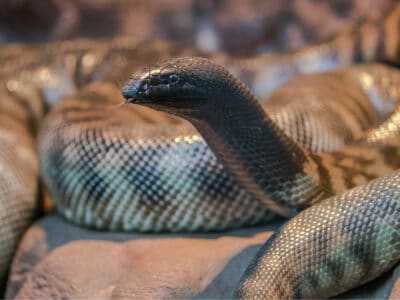
Black-headed python
Black-headed pythons gather heat with their heads while their bodies stay hidden and safe.

Black Widow Spider
They typically prey on insects!

Blind Snake
The blind snake is often mistaken for a worm.

Blowfly
Can smell rotting carcasses up to one mile away

Blue Andalusian
Blue Andalusian chickens are a classic example used to teach students about genetics!

Blue Dragon Sea Slug
They inflict a painful, venomous sting

Box Jellyfish
Venomous marine animals
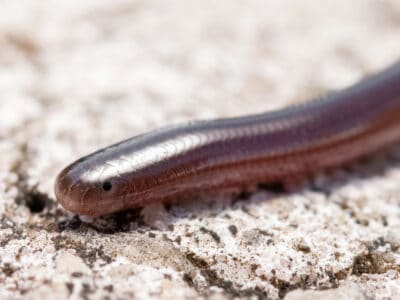
Brahminy Blindsnake
These snakes have been introduced to all continents, except Antarctica!

Brazilian Treehopper
“Mild-Mannered Minimonsters”

Bredl’s Python
These snakes love to climb trees, and young snakes often hide high in the branches.

Brown Dog Tick
Can live its entire life indoors

Brown Snake
Causes the most snake bite deaths in Australia!

Brown Tree Snake
People have reported seeing these snakes in Texas, Oklahoma, and Hawaii, but this has never been proven!

Budgerigar
Natively found in Australia!
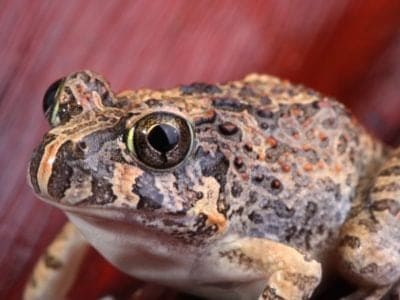
Burrowing Frog
Found close to marshes, streams and lakes!

Butterfly
There are thought to be up 17,500 species!

Cactus Moth
Cactus moths can cause serious damage to cacti in locations where they have no predators.
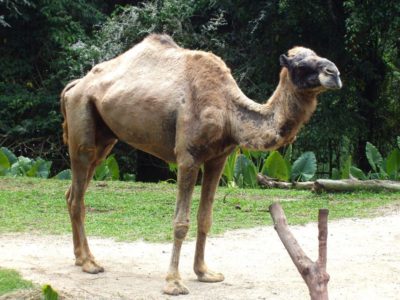
Camel
Can survive without water for 10 months!

Camel Cricket
The camel crickets that are found in the USA are light brown in color. They also have dark streaks all over their body.
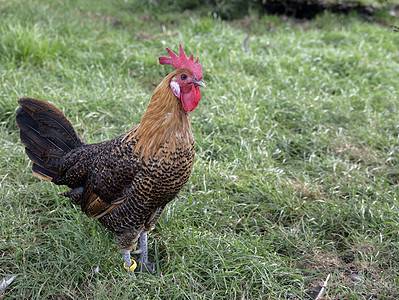
Campine Chicken
Campine chickens were exported from Belgium by Julius Caesar!
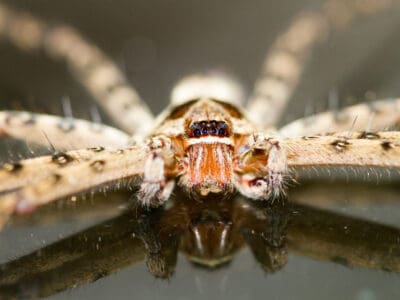
Cane Spider
Cane spiders don't spin webs to catch prey

Carpenter Ant
Carpenter ants can lift up to seven times their own weight with their teeth!
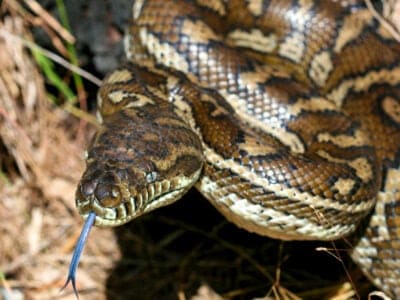
Carpet Python
Carpet pythons are popular pets because of their calm temperament.
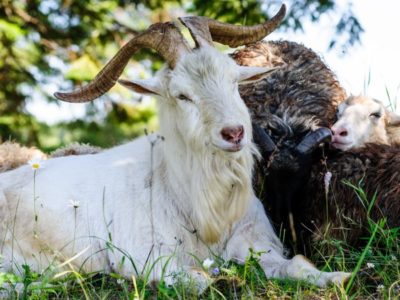
Cashmere Goat
Cashmere goat are named after Kashmir regions of India and Pakistan
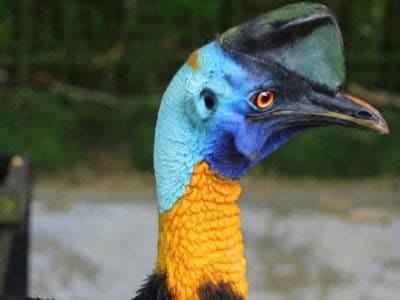
Cassowary
Can reach speeds of 30 mph!

Cat
May have been domesticated up to 10,000 years ago.

Caterpillar
The larvae of a moth or butterfly!

Catfish
There are nearly 3,000 different species!

Centipede
There are about 3,000 documented species!

Central Ranges Taipan
The central ranges taipan may be among the deadliest snakes in the world.

Chicken
First domesticated more than 10,000 years ago!
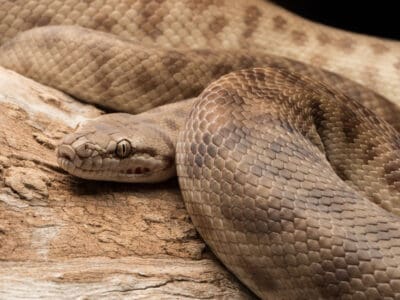
Children’s python
These snakes come in a wide variety of patterns and colors.

Christmas Beetle
Christmas beetles got their common name because they’re most abundant around Christmas time.

Christmas Island Red Crab
During the breeding season, roads can dangerous for cars as well as the crab. Their shells are so hard they can puncture tires.

Cicada
Cicadas have one of the longest insect lifespans

Clock Spider
Males make a rhythmic thrumming like a clock
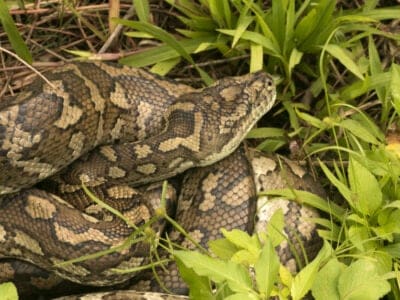
Coastal Carpet Python
This subspecies can reach 13 feet, but usually tops out at 9 or 10.
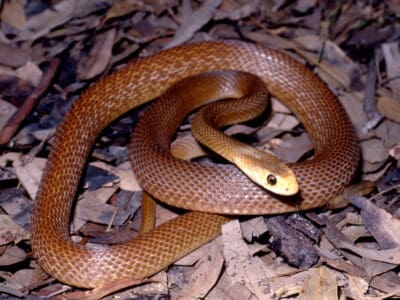
Coastal Taipan
The venom in its bite starts to have adverse effects on a human within 30 minutes

Cochin Chicken
Cochin chickens gifted to Queen Victoria started a craze that lasted more than a decade!
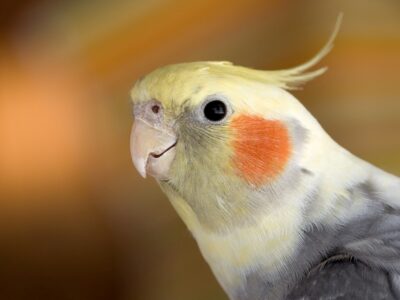
Cockatiel
They have crests that rise or fall depending on their emotions
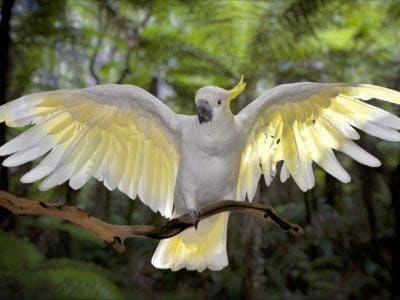
Cockatoo
Highly social, smart, and chatty bird.

Cockroach
Dated to be around 300 million years old!

Codling Moth
Pupae are able to undergo diapause to survive poor fruit yield years and winter.

Collett’s Snake
Collett’s snake is beautiful but almost as dangerous as a mulga snake.
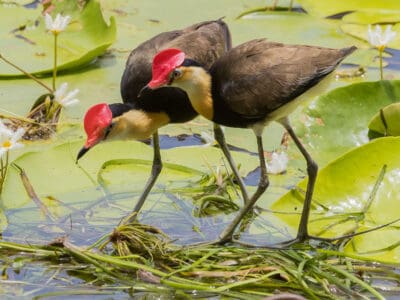
Comb-crested Jacana
They are busy foragers, always on the move

Common Furniture Beetle
The common furniture beetle feeds exclusively on wood

Common House Spider
House spiders have the ability to eat most insects in a home.

Common Spotted Cuscus
Has a long, strong prehensile tail!

Cone Snail
Beautiful, but deadly!
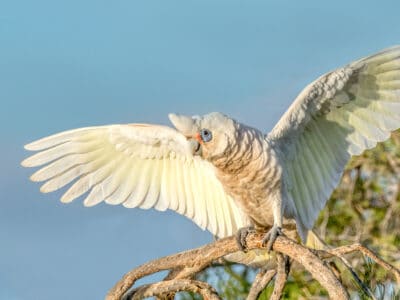
Corella
Corella birds are noisy, especially during the early morning or late evening.

Cormorant
They can fly 35 mph and dive 150 feet below water.
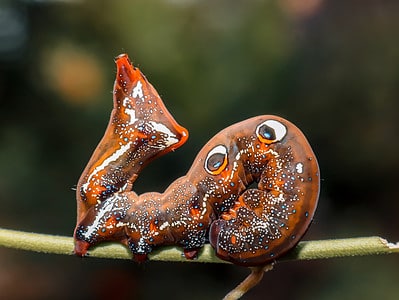
Cosmic Caterpillar
Cosmic caterpillars have spots on their back that look like eyes to scare off predators.

Cow
There are nearly 1.5 billion worldwide!

Crab
There are 93 different crab groups

Crab Spider
Crab Spiders can mimic ants or bird droppings

Crane
Many are critically endangered species!

Cricket
Male crickets can produce sounds by rubbing their wings together

Crocodile
Have changed little in 200 million years!

Crocodylomorph
Crocodylomorphs include extinct ancient species as well as 26 living species today.

Crow
A group of these birds is called a Murder.

Death Adder
The Death Adder is more closely related to the Cobra than other Australian snakes.

Diamond Python
These pythons live at higher altitudes and further south than any other python species.

Diamondback Moth
Adult males make high amplitude boing noise to attract females

Dingo
Natively found on the Australian continent!
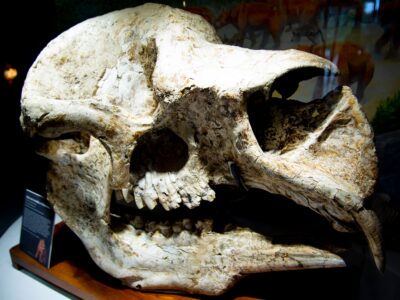
Diprotodon
Diprotodon was the largest marsupial that ever lived.

Dobsonfly
The dobsonfly spends up three years as a larva, and only a week as an adult.

Dog
First domesticated in South-East Asia!

Dog Tick
Dog ticks feed on dogs and other mammals

Donkey
First domesticated 5,000 years ago!

Dragonfly
It's larvae are carnivorous!

Duck
Rows of tiny plates line their teeth!

Dung Beetle
The dung beetle can push objects many times its own weight
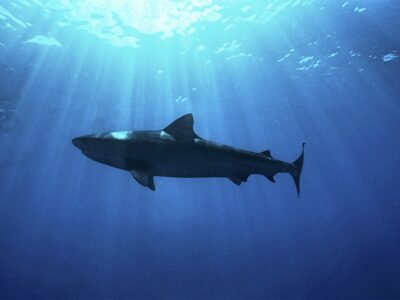
Dusky Shark
The Dusky Shark sometimes eats trash discarded by humans.

Earthworm
They are hermaphrodites, which means they have male and female organs

Earwig
There are nearly 2,000 different species!

Eastern Barred Bandicoot
Digs funnel-shaped holes in search of insects

Eastern Tiger Snake
More than 10 percent of eastern tiger snakes are blind in at least one eye.
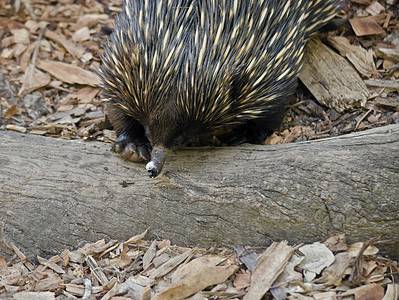
Echidna
Also known as the Spiny Anteater!

Eel
Eels can be a mere few inches long to 13 feet!
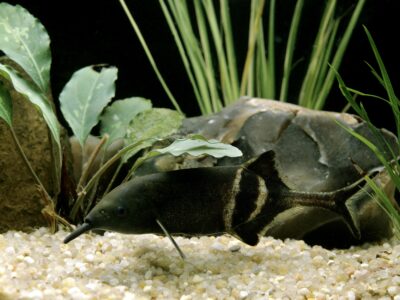
Elephant Fish
Elephant fish are known as the Australian ghost shark, but they are not actually a shark species!

Emerald Tree Monitor
They lay their eggs in termite nests!

Emu
The largest bird in Australia!
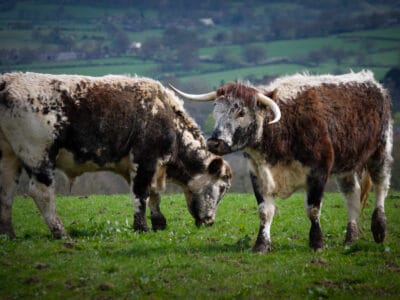
English Longhorn Cattle
Although they look similar to the Texas Longhorn, they are not closely related.
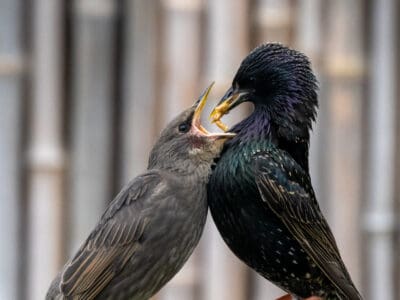
European Starling
European starlings are accomplished mimics, often copying songs or sounds of other birds and animals (frog calls, goats, cats), or even mechanical sounds and human speech!

Fairy-Wren
They forage in groups

Falcon
The fastest creatures on the planet!

Fallow deer
The fallow deer has more variation in its coat colors than most other deer.

False Widow Spider
False spiders actually prey on black widow spiders and other hazardous spiders
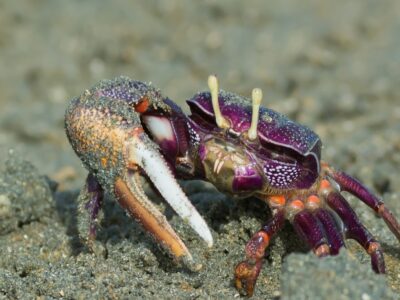
Fiddler Crab
The fiddler crab gets its name from the motion the males make with their over-sized claw during the mating ritual.

Fierce Snake
It can kill multiple humans with the amount of venom it releases in one bite.

Firefly
The firefly produces some of the most efficient light in the world

Flea
Adult fleas can jump up to 7 inches in the air

Fly
There are more than 240,000 different species!
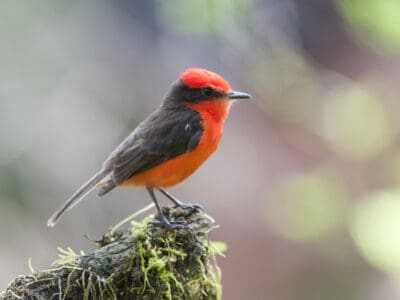
Flycatcher
Most of the hundreds of varieties of flycatchers belong to the Tyrannidae and Muscicapidae families!
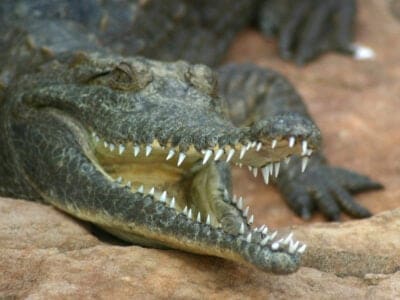
Freshwater Crocodile
The freshwater crocodile is the fastest crocodile on land.

Frilled Lizard
Mainly lives in the trees!

Frizzle Chicken
Frizzle chickens are known for their frizzled feathers, which result from a genetic mutation.

Frog
There are around 7,000 different species!
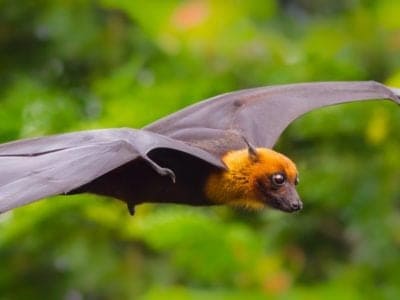
Fruit Bat
Among the largest bats in the world

Fruit Fly
Fruit flies are among the most common research animals in the world
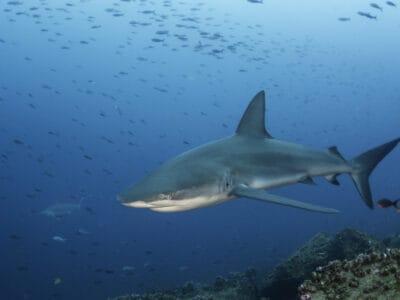
Galapagos Shark
Galapagos sharks are cannibalistic and sometimes eat their young, so the pups stay away from the adults in shallow water.

Gecko
There are thought to be over 2,000 species!

German Cockroach
The most common type of urban roach

Giant Trevally
The largest fish in its genus

Giant Wood Moth
The giant wood moth is the heaviest known moth in the world.

Glowworm
Found inhabiting dense woodland and caves!

Gnat
Males form large mating swarms at dusk

Gouldian Finch
The male Gouldian finch bobs its head and fluffs its feathers to court a female.

Grasshopper
There are 11,000 known species!
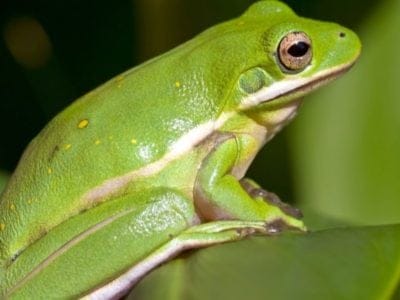
Green Tree Frog
Green tree frogs breathe through their skin
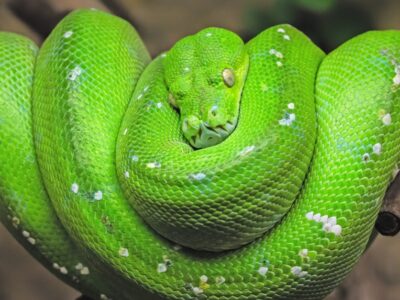
Green Tree Python
Green tree pythons are non-venomous, so to subdue their prey, they have a couple of very unique and highly successful hunting techniques.

Hamster
Able to run as quickly backwards as forwards!

Hare
Can reach speeds of over 50 mph!

Hawk Moth Caterpillar
Many hawk moth caterpillars eat toxins from plants, but don’t sequester them the way milkweed butterflies do. Most toxins are excreted.
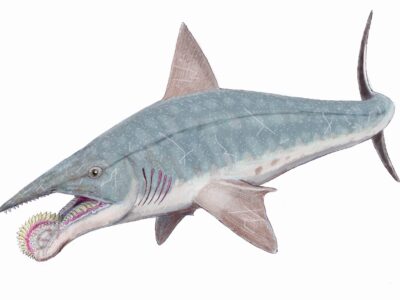
Helicoprion
Helicoprion was one of the largest cartilaginous fish of all time.
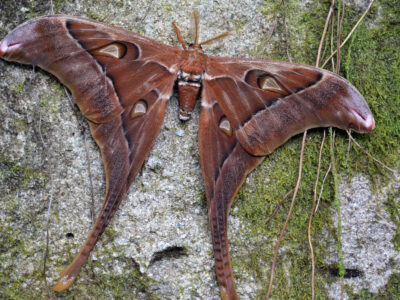
Hercules Moth
Adult Hercules moths don’t eat since they don’t have mouths.

Heron
Inhabits wetlands around the world!

Highland Cattle
Natively found in the Scottish Highlands!
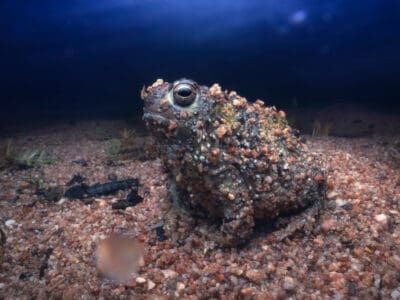
Holy Cross Frog
The holy cross frog has a cross-shaped colored pattern on its back.

Honey Bee
There are only 8 recognized species!

Horse
Has evolved over 50 million years!

Horsefly
Horseflies have been seen performing Immelmann turns, much like fighter jets.

House Sparrow (English Sparrow)
The house sparrow has been introduced all over the world

Housefly
The fly has no teeth

Human
Thought to have orignated 200,000 years ago!

Huntsman Spider
Some huntsman spiders have an interesting way of moving around. Some cartwheel while others do handsprings or backflips.

Ibis
Found in swamps, marshes and wetlands!

Inland Taipan
A single inland taipan bite has enough venom to kill a hundred men.

Insects
There are an estimated 30 million species!
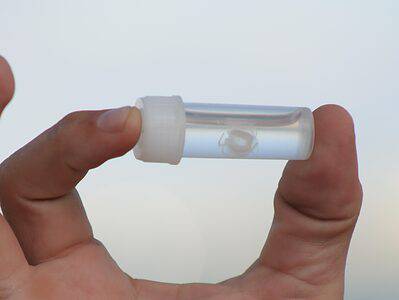
Irukandji Jellyfish
Tiny ocean killer

Jacana
The jacana has the ability to swim underwater
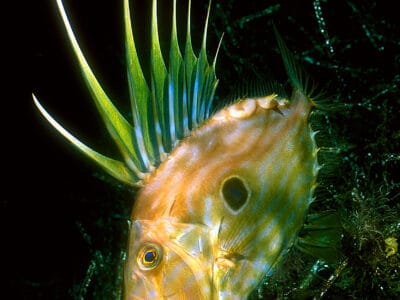
John Dory
The John Dory is often labeled one of the ugliest fish in the world and has no known relatives.

Jungle Carpet Python
Their stunning coloration is sometimes muddy yellow or even tan and black in the wild.

Kangaroo
Females have a deep pouch on their front!
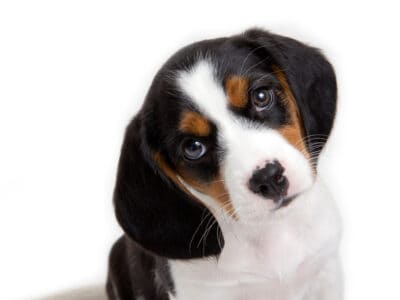
Keagle
These adorable dogs are known for their love of children, strangers, and other animals because of their docile demeanor.
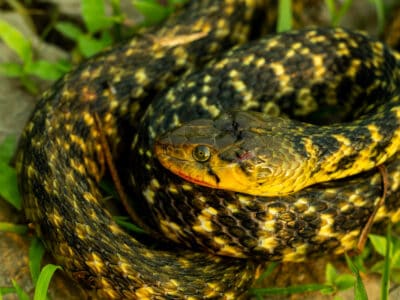
Keelback
The checkered keelback of the east Indies can detach its tail and grow it back, much like a lizard.
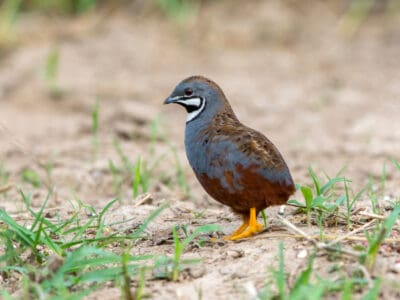
King Quail
Females look similar to males but don’t come in shades of blue
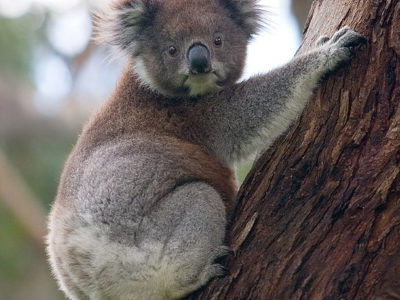
Koala
Spends up to 80% of the time sleeping or resting!

Koolie
The name "koolie" comes from the German mispronunciation of "collie."

Kowari
Kowaris do not drink or take water; all they get is the water content in their diet.

Labout’s Fairy Wrasse
Females are sequential hermaphrodites, which means they can convert to males anytime during their life cycle.

Labradoodle
Friendly and energetic mix-breed!
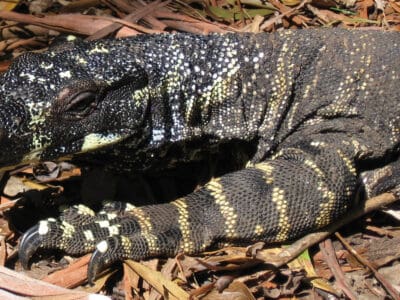
Lace Monitor
When communicating, they make a loud, terrifying hissing sound, and they will strike any potential danger with their mighty tails.

Ladybug
There are more than 5,000 species worldwide!

Laughing Kookaburra
The laughing kookaburra is one of four kookaburra species.
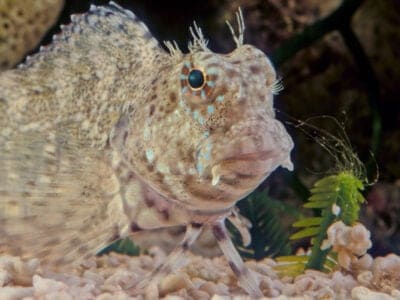
Lawnmower Blenny
Must be in temperatures of 78 degrees Fahrenheit to breed

Leech
Has 10 pairs of eyes!

Leghorn Chicken
Leghorn chickens, one of the most popular industrial breeds, lay up to 320 eggs per year!

Leichhardt’s Grasshopper
Spend their lives
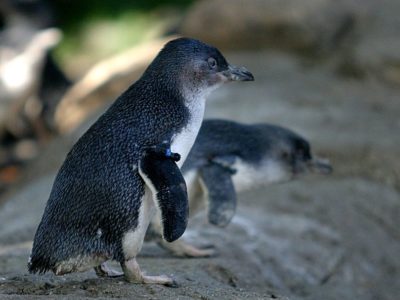
Little Penguin
The smallest species of penguin!

Lizard
There are around 5,000 different species!

Locust
Each locust can eat its weight in plants each day.
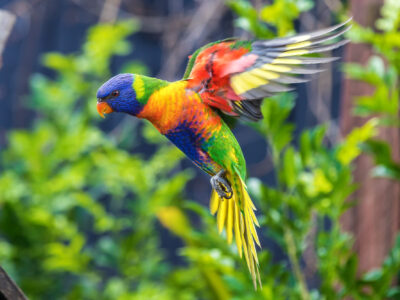
Lorikeet
The lorikeet has a long brush-like tongue with fine hairs on it
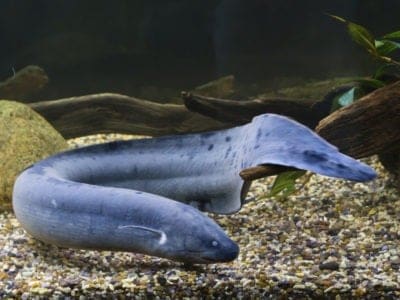
Lungfish
The lungfish first evolved almost 400 million years ago.
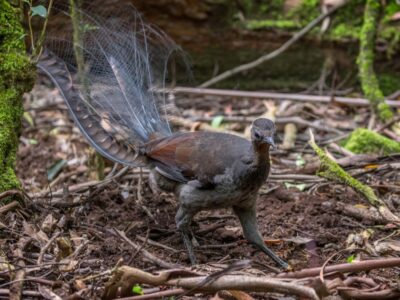
Lyrebird
Lyrebirds mimic birds of prey to deter predators such as birds of prey.

Magpie
They are found across Europe, Asia and Africa!

Mallard
With an appropriate tail wind, the mallard can travel hundreds of miles a day
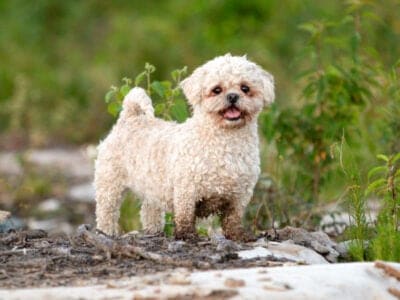
Maltese Shih Tzu
Both parent breeds, the Maltese and Shih Tzu, once entertained royalty!
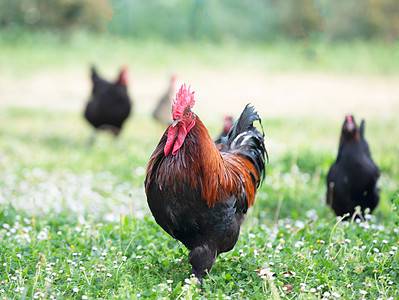
Marans Chicken
Marans chickens produce some of the darkest, chocolate-brown eggs in the world!
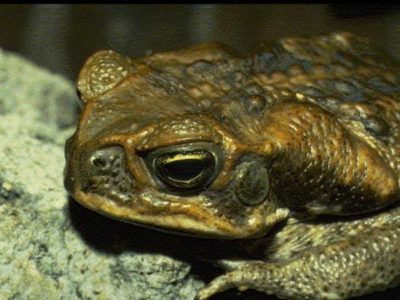
Marine Toad
Produces a toxin used in arrow darts!

Mayfly
There are 2,500 known species worldwide!

Mealworm Beetle
In 1968, the mealworm beetle traveled to space and circled the moon on the Soviet mission Zond 5.

Mealybug
They have a symbiotic relationship with ants.
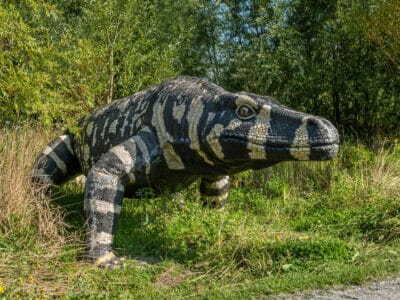
Megalania
Some people believe that Megalania still exists in remote areas, although those beliefs have never been validated with evidence.

Meiolania
The Meiolania had a massive head that it was unable to put fully inside its shell.

Millipede
Some species have a poisonous bite!
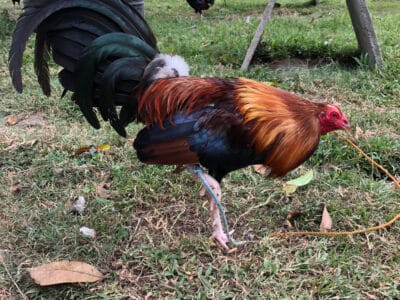
Modern Game Chicken
The Modern Game chicken is a lanky bird with legs that go for days!

Mole
Primarily hunts and feeds on Earthworms!
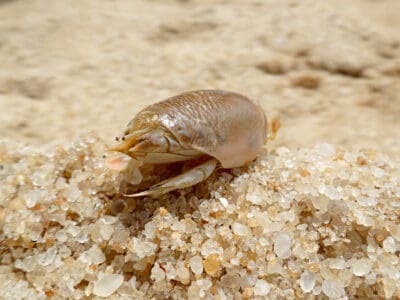
Mole Crab (Sand Flea)
They eat jellyfish tentacles

Mole Cricket
Adult Mole crickets may fly as far as 5 miles during mating season and are active most of the year.
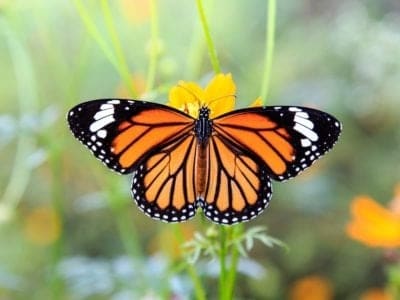
Monarch Butterfly
During migration, Monarch Butterflies may travel 250 or more miles each day.

Mongrel
Has characteristics of two or more breeds!

Monitor Lizard
Some species are thought to carry a weak venom!

Moorhen
Feeds on aquatic insects and water-spiders!

Mosquito
Only the female mosquito actually sucks blood

Moth
There are 250,000 different species!

Mouse
Found on every continent on Earth!

Mouse Spider
The female mouse spider is rarely seen because they don't leave their burrows.
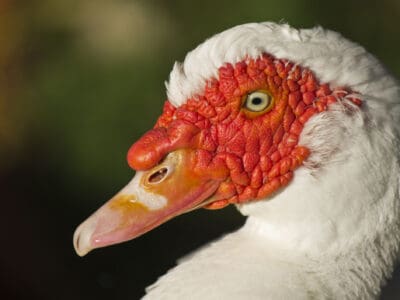
Muscovy Duck
Unlike most duck species, the Muscovy is silent and only makes noise when excited or threatened.
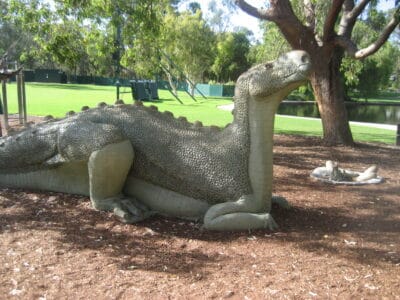
Muttaburrasaurus
They stood about 26 feet tall and weighed more than 3 tons, as heavy as today's African forest elephants.

Muttaburrasaurus
Muttaburrasaurus is named after the town of Muttaburra in central Queensland.
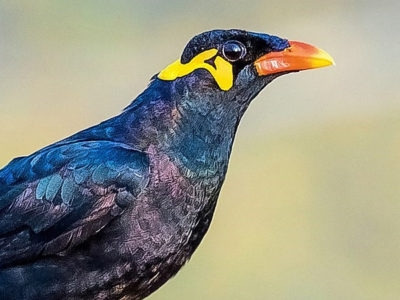
Myna Bird
Many people believe the hill myna bird is better at mimicking humans than a parrot!
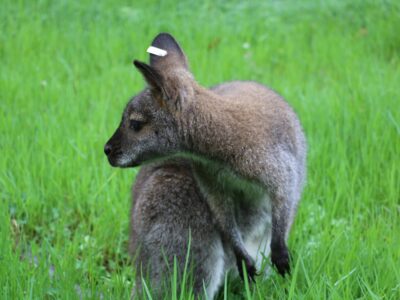
Nabarlek
Nabarleks have teeth like a shark, with new molars continuously emerging from the back.
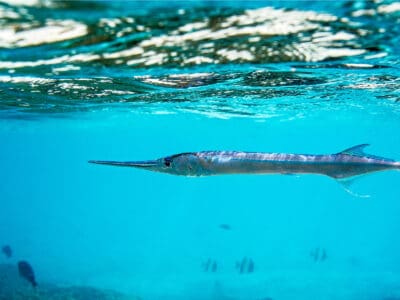
Needlefish
no stomach to digest food

Nematode
Nematodes range in size from 1/10 of an inch to 28 feet long

Neptune Grouper
The largest recorded specimen ever caught was 17" long
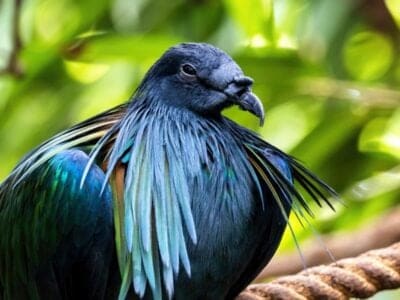
Nicobar pigeon
Unlike other pigeons, Nicobar pigeons don't fly in haphazard flocks but in columns or single file.

No See Ums
There are more than 5,000 species.

Numbat
There are less than 1,000 left in the wild!

Oenpelli python
Oenpelli pythons are unusually thin for a python.

Olive python
The olive python is a gentle giant that is rarely aggressive.

Oranda Goldfish
Oranda goldfish are one of the most popular fancy goldfish breeds

Orb Weaver
Females are about four times the size of males

Oriental Cockroach
Unlike other cockroach species that live indoors living off humans, oriental cockroaches are outdoor scavengers.

Osprey
They reuse nesting sites for 70 years!

Otter
There are 13 different species worldwide

Owl
The owl can rotate its head some 270 degrees
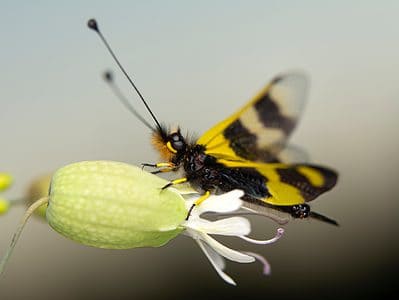
Owlfly (Ascalaphidae)
Adult owlflies can capture prey while flying in the air.
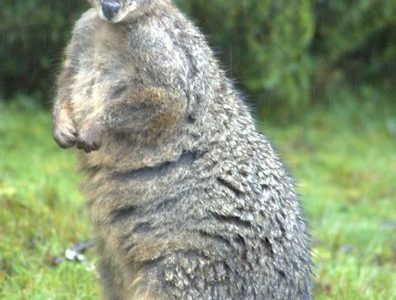
Pademelon
Inhabits the jungles of the far east!
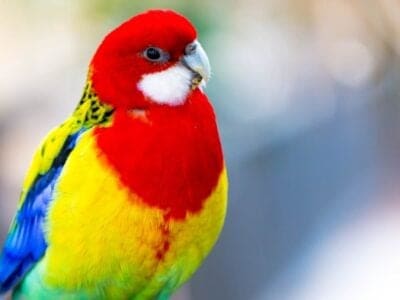
Parakeet
Monk parakeets are the only parakeets that actually build nests. They’re also the only parakeets to nest in great colonies.

Parrot
Can live for up to 100 years!

Peacock Spider
They can jump up to 10 centimeters (40 times their body size) and see the full rainbow spectrum of light, including UV.
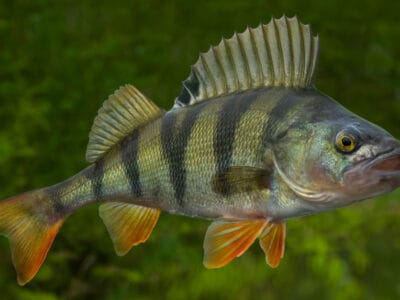
Perch Fish
Some of the most delicious gamefish in the world

Peregrine Falcon
Fastest animal on Earth

Pheasant
Females lay between 8 and 12 eggs per clutch!

Pheasant-tailed Jacana
The pheasant-tailed jacana is the only species in its family that migrates long distances.

Pig-Nosed Turtle
Their family lineage dates back 140 million years

Pigeon
They can find their way back to their nests from up to 1300 miles away.

Platinum Arowana
The male broods the eggs and baby fish in his mouth.
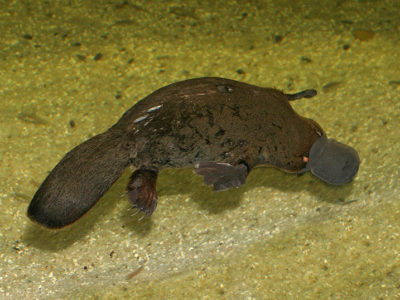
Platypus
One of the only mammals to lay eggs!

Pliosaur
Pliosaurs were the short-necked version of plesiosaurs.
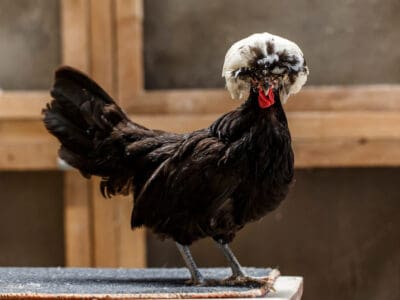
Polish Chicken
The Polish chicken has a large, feathered crest supported by a round, bony prominence on the skull!

Pompano Fish
They are bottom-feeders
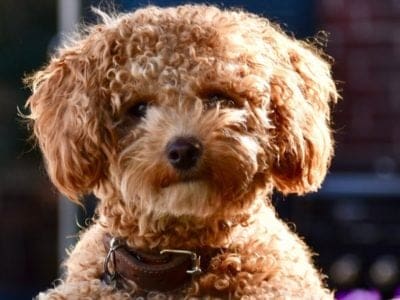
Poochon
The Poochon was first bred in Australia.

Possum
There are 69 species on the Australian continent!
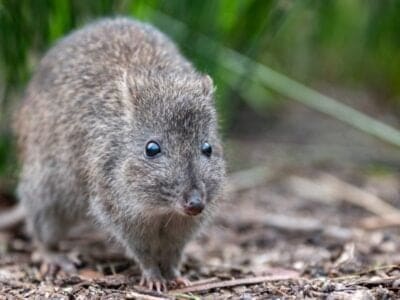
Potoroo
They can carry items with their tail.

Praying Mantis
The mantis can turn its head 180 degrees.

Procoptodon
The largest variety of kangaroo to have ever been discovered.
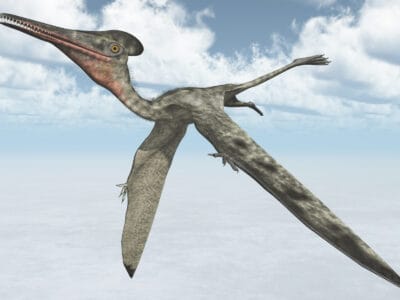
Pterodactyl
Pterodactyl is not technically a dinosaur. Although they lived during the same time as dinosaurs, they are classified as winged reptiles.

Pygmy python
These snakes have been seen traveling as group of 3-5.

Quail
Inhabits woodland and forest areas worldwide!

Quokka
Makes runways through the long grasses!
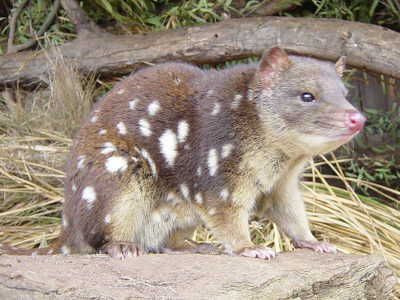
Quoll
Found across Australia and Papua New Guinea!

Rat
Omnivores that eat anything!
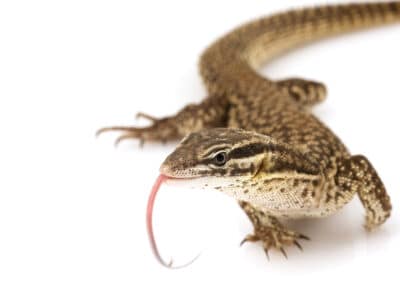
Red Ackie Monitor
The red ackie prefers burrowing to climbing.
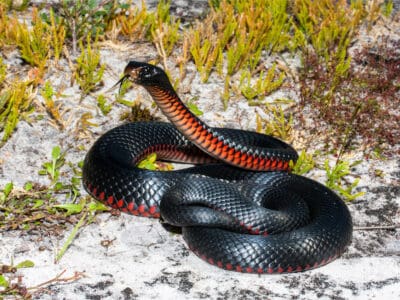
Red-Bellied Black Snake
These snakes are the only ones in the genus Pseudechis to give birth to live offspring.
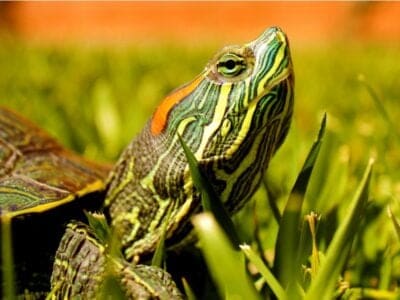
Red-Eared Slider
Sliders spend lots of time basking in the sun. As cold-blooded animals, they need the sun to heat up.
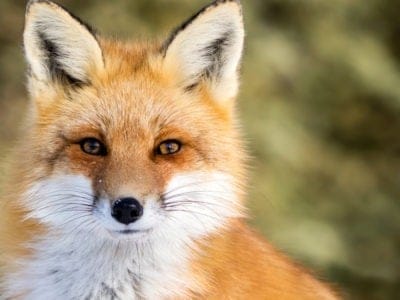
Red Fox
The red fox actually has many different variations of fur, including silver and brown.
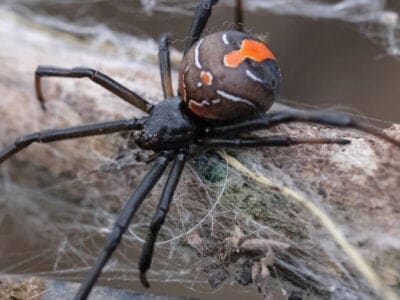
Redback Spider
The redback spiders found in New Caledonia differ from other populations in that they don’t practice sexual cannibalism and don’t bite people as much.
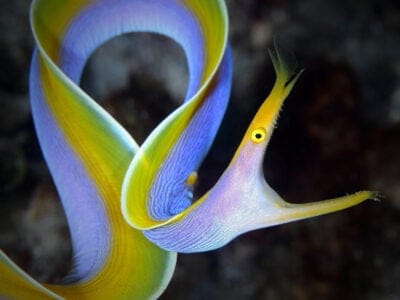
Ribbon Eel
Can fit its body into a tiny crevice of a reef

River Turtle
Inhabits freshwater habitats around the world!

Robin
There are more than 45 species in Australia alone!

Rodents
The capybara, the world’s largest rodent, likes to be in and around bodies of water. Because of this, the Catholic Church in South America decided that it was a fish, and people were allowed to eat it during Lent and First Fridays.

Rooster
Will mate with the entire flock!

Sable Ferret
Ferrets were used during the Revolutionary War to keep down the rat population.
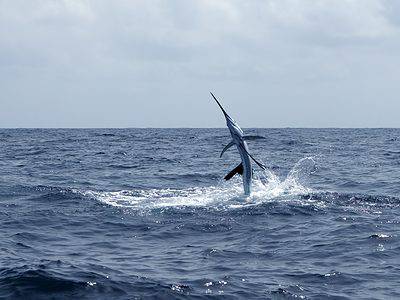
Sailfish
Fast billfish with a sail-like dorsal fin
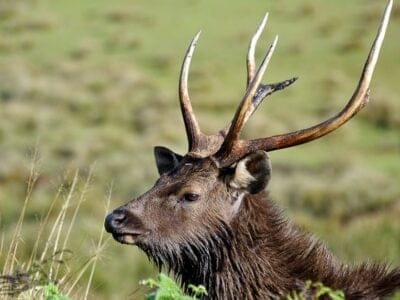
Sambar
Male sambars will compete for mates by clashing together with their antlers

Sand Crab
The sand crab burrows beneath the sand with its tail
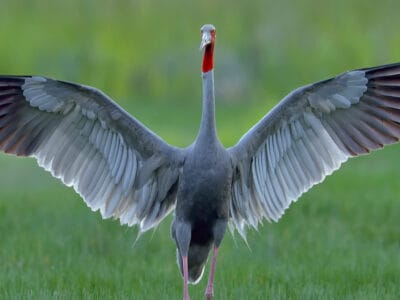
Sarus Crane
Parents use low calls to tell their chicks to freeze and lie still when danger lurks.
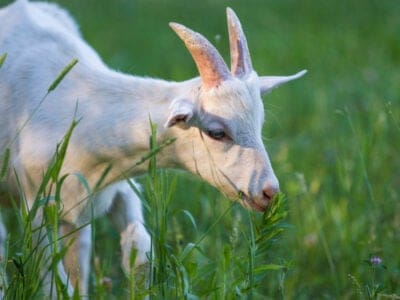
Savanna Goat
Savanna goats have only existed since 1957.

Scarab Beetle
The ancient Egyptians worshipped scarabs.

Scorpion
There are around 2,000 known species!
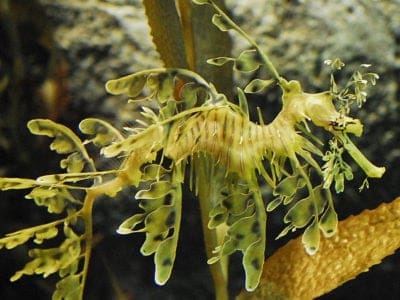
Sea Dragon
Inhabits tropical coastal waters of Australia!

Sea Eagle
The sea eagle tends to mate for life with a single partner

Seahorse
Males give birth to up to 1,000 offspring!

Senepol Cattle
Senepol cattle have a distinctive red color and no horns.
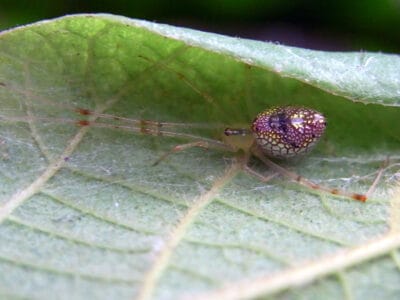
Sequined Spider
You may even be able to see a reflection in their reflective sequins!

Sheep
Around 35 million in the English countryside!

Shrimp
There are 2,000 different species worldwide!

Silky Terrier
Silky terriers can be trained to participate in many events, including herding, agility, rally, tracking and fly ball.

Skink Lizard
Some skinks lay eggs in some habitats while giving birth to skinklets in other habitats.

Skua
Skuas will chase other birds until they give up their catch

Slug
They glide around on one foot, which is aided by the slime they produce

Smokybrown Cockroach
Has up to 45 eggs per egg case

Snail
There are nearly 1,000 different species!

Snake
There are around 4,000 known species worldwide

Sparrow
There are 140 different species!

Spider Wasp
They prey on spiders to feed their larvae or they parasitize other spider wasps.

Spotted Garden Eel
Males battle each other over females and territory

Spotted python
Their favorite food is bats and they hang from cave entrances to snatch them out of midair!
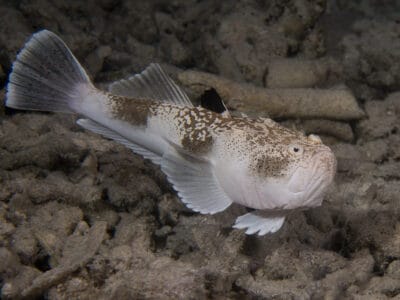
Stargazer Fish
Uses an electric shock to stun its prey!

Stick Insect
There are more than 3,000 different species!

Stork
They can’t sing like other birds.

Strawberry Hermit Crab
When strawberry hermit crabs find shells that are larger than their own, they gather in a line from biggest to smallest. Once the biggest one sheds its shell, the next one in line will claim it, which is repeated down the line.
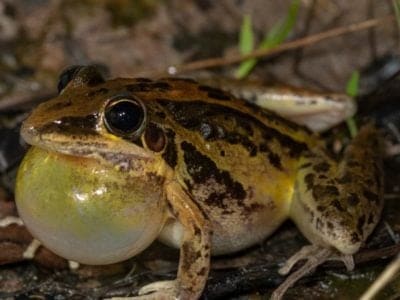
Striped Rocket Frog
Long powerful hind legs!

Stromatolite
Stromatolites played a key role in the development of life on Earth.

Swan
Populations have been affected by pollution!
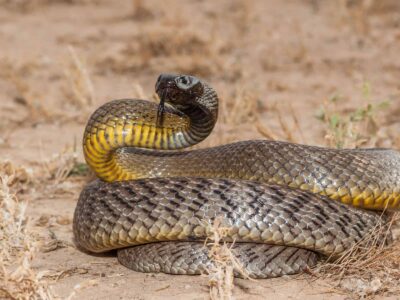
Taipan
The Most Venomous Snakes On Earth

Tarantula Hawk
Tarantula hawks are excellent pollinators, especially for milkweed.
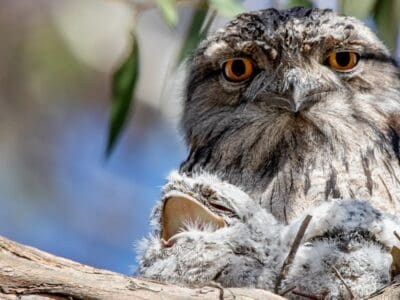
Tawny Frogmouth
The tawny frogmouth is a master of camouflage that can hide in plain sight!
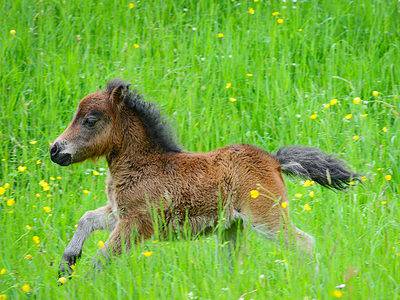
Teacup Miniature Horse
Female teacup minis become sexually mature between 2 and 5 years old, but breeders typically wait until their horse is 3 before letting her reproduce to prevent complications.

Tenterfield Terrier
These terriers have quick minds and fast feet making them excellent for agility competitions.

Termite
Their mounds can be up to 9 meters tall!

Terrier
Terriers were once the greatest dogs in the world.
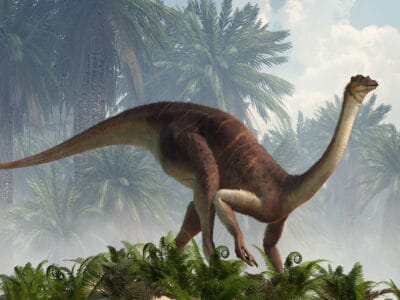
Theropod
Some theropods had feathers and may have been ancestors of modern birds.
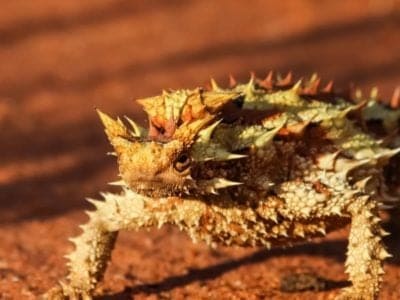
Thorny Devil
Found only on mainland Australia!

Thrush
The American robin is called the robin because its red breast reminded European settlers of the robin back in the old country.
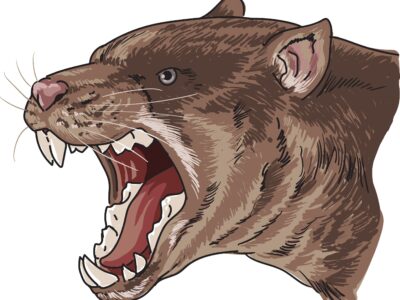
Thylacoleo
Scientists have speculated that its bite force was equivalent to that of a 551 pound lion!
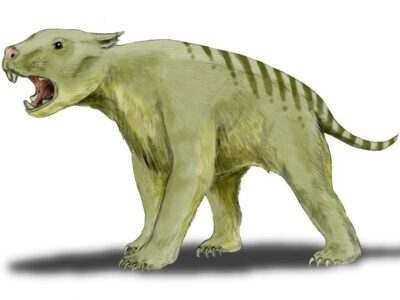
Thylacoleo carnifex
Thylacoleo carnifex was the largest carnivorous mammal in Australia

Tick
They inject hosts with a chemical that stops them from feeling the pain of the bite

Tiger Beetle
The adult tiger beetle is one of the fastest land insects in the world

Tiger snake
Tiger Snakes can spend nine minutes underwater without returning to the surface to breathe

Tiger Trout
As tiger trout are sterile, they cannot produce offspring. However, they do have relatively long lifespans and can live up to 10 years in captivity.
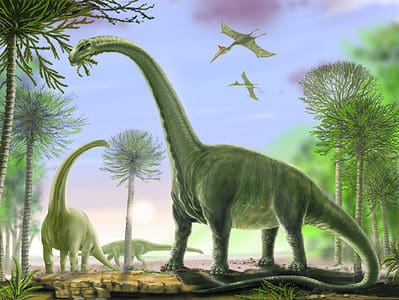
Titanosaur
Among the largest land animals to ever exist

Tomato Hornworm
The tomato hornworm is a ferocious pest that can eat all parts of a plant, including the fruits.

Tree Cricket
They make music with their wings

Tree Frog
Found in warmer jungles and forests!
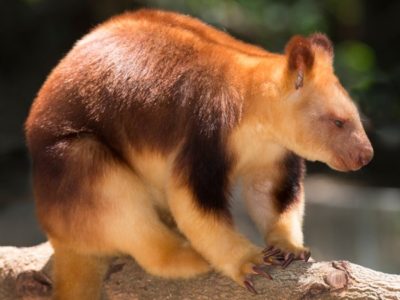
Tree Kangaroo
It’s the only macropod that lives in trees.

Tree Snake
Though this snake’s venomous bite isn’t harmful to adults, it can be dangerous to children

Treecreeper
Their tailfeathers help them maintain their balance on a tree trunk
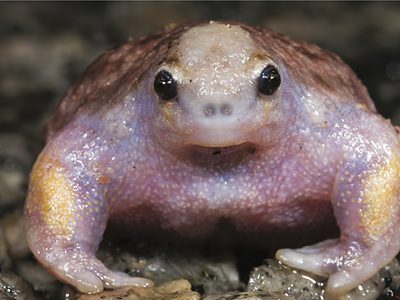
Turtle Frog
A turtle frog can eat more than 400 termites in a single meal.

Turtles
Some species of aquatic turtles can get up to 70 percent of their oxygen through their butt.

Ulysses Butterfly
Ulysses butterflies have come back from endangered status to just "threatened."
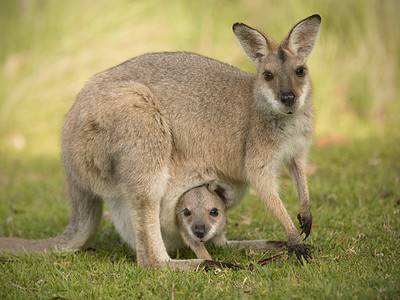
Wallaby
There are roughly 30 different species!
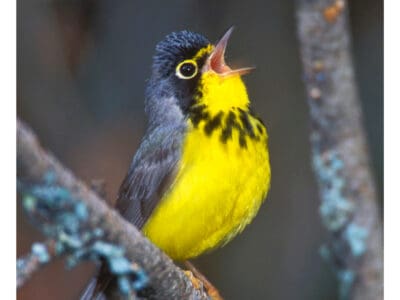
Warbler
Warblers are so called because of the trills of their song.

Wasp
There are around 75,000 recognised species!

Water Buffalo
Has been domesticated for thousands of years!
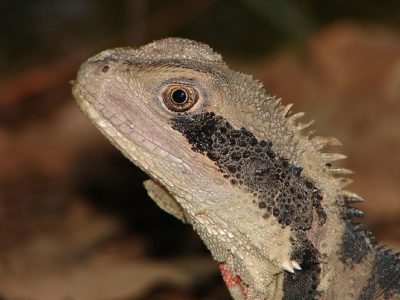
Water Dragon
Spends most of it's time in the trees!

Wax Moth
The Wax Moth larvae are more dangerous than the adult.

Welsh Black Cattle
Welsh Black Cattle were once used as currency in Wales and referred to as “black gold”.

White Butterfly
This butterfly determines the smell and taste of a flower with its feet.

White Ferret / Albino Ferrets
There are two different types of white ferrets!
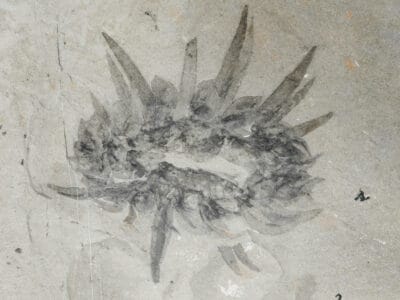
Wiwaxia
The body of Wiwaxia was covered by rows of sclerites and spines

Wolf Spider
Carnivorous arachnid that hunts its prey.
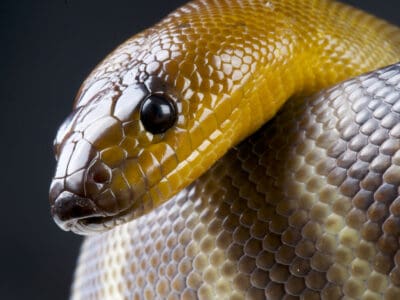
Woma Python
Woma pythons often prey on venomous snakes and are immune to some venoms.
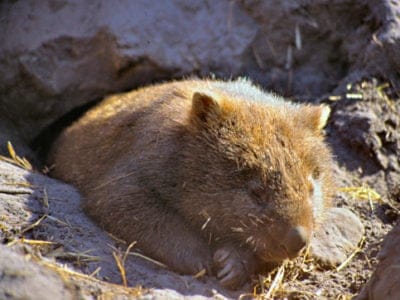
Wombat
Spends most of the day underground!

Woodlouse
This animal can roll up into a ball

Woodlouse Spider
Unlike most spiders, woodlouse spiders don’t build a web.

Worm
Doesn’t have eyes.
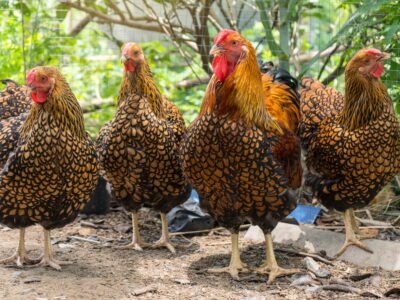
Wyandotte Chicken
The Wyandotte chicken was the first dual-purpose American chicken bred for both meat and eggs!
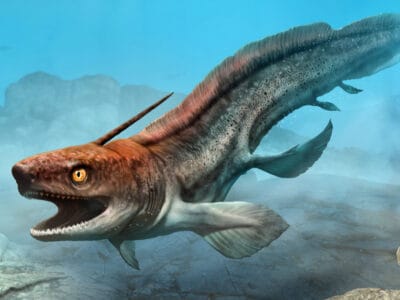
Xenacanthus
Smal eel-like ancient shark

Yabby
The yabby can survive long periods of droughts by burrowing into the soil.

Yellow-Bellied Sea Snake
Sea snakes spend approximately 90% of their lives under water.

Yellow Crazy Ant
One of the top 100 worst invasive species!

Yellowhammer
It interbreeds with the pine bunting
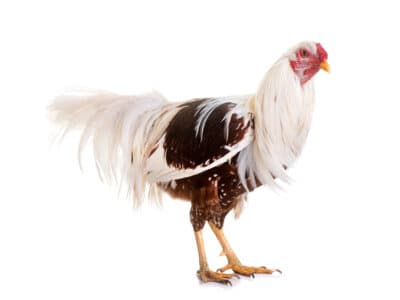
Yokohama Chicken
Yokohama chickens have snow white feathers with tails reaching up to 4 feet in length.
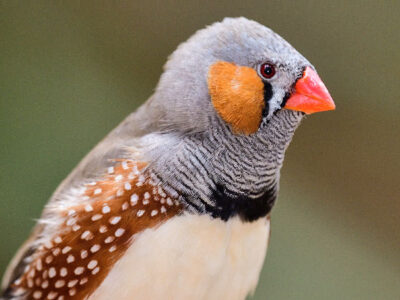
Zebra Finch
The male zebra finch creates a unique song by drawing inspiration from its parent or tutor
Australian Animals List
- Ackie Monitor
- Admiral Butterfly
- Albatross
- Allosaurus
- Amethystine Python (Scrub Python)
- Angora Goat
- Anomalocaris
- Ant
- Apple Moth
- Arafura File Snake
- Atlas Moth
- Australian Bulldog
- Australian Cattle Dog
- Australian Cockroach
- Australian Firehawk
- Australian Flathead Perch
- Australian Gecko
- Australian Kelpie Dog
- Australian Labradoodle
- Australian Mist
- Australian Shepherd
- Australian Terrier
- Australorp Chicken
- Avocet
- Banana Spider
- Bandicoot
- Barn Owl
- Barn Swallow
- Bass
- Bat
- Beaglier
- Bearded Dragon
- Bed Bugs
- Bee
- Bee-Eater
- Beetle
- Bichpoo
- Bilby
- Bird
- Bird Of Paradise
- Biscuit Beetle
- Black-headed python
- Black Widow Spider
- Blind Snake
- Blowfly
- Blue Andalusian
- Blue Dragon Sea Slug
- Boiga
- Box Jellyfish
- Brahminy Blindsnake
- Brazilian Treehopper
- Bredl’s Python
- Brown Dog Tick
- Brown Snake
- Brown Tree Snake
- Budgerigar
- Burrowing Frog
- Butterfly
- Cactus Moth
- Camel
- Camel Cricket
- Campine Chicken
- Cane Spider
- Carpenter Ant
- Carpet Python
- Cashmere Goat
- Cassowary
- Cat
- Caterpillar
- Catfish
- Centipede
- Central Ranges Taipan
- Chicken
- Children’s python
- Christmas Beetle
- Christmas Island Red Crab
- Cicada
- Clock Spider
- Coastal Carpet Python
- Coastal Taipan
- Cochin Chicken
- Cockatiel
- Cockatoo
- Cockroach
- Codling Moth
- Collett’s Snake
- Comb-crested Jacana
- Common Furniture Beetle
- Common House Spider
- Common Spotted Cuscus
- Cone Snail
- Corella
- Cormorant
- Cosmic Caterpillar
- Cow
- Crab
- Crab Spider
- Crane
- Cricket
- Crocodile
- Crocodylomorph
- Crow
- Cuckoo
- Death Adder
- Diamond Python
- Diamondback Moth
- Dickinsonia
- Dingo
- Diprotodon
- Dobsonfly
- Dog
- Dog Tick
- Donkey
- Dragonfly
- Dromornis stirtoni
- Duck
- Dung Beetle
- Dusky Shark
- Earthworm
- Earwig
- Eastern Barred Bandicoot
- Eastern Brown Snake
- Eastern Tiger Snake
- Echidna
- Eel
- Elephant Fish
- Emerald Tree Monitor
- Emu
- English Longhorn Cattle
- European Starling
- Fairy-Wren
- Falcon
- Fallow deer
- False Widow Spider
- Fiddler Crab
- Fierce Snake
- Firefly
- Flea
- Fly
- Flycatcher
- Freshwater Crocodile
- Frilled Lizard
- Frizzle Chicken
- Frog
- Fruit Bat
- Fruit Fly
- Galapagos Shark
- Gecko
- German Cockroach
- Giant Trevally
- Giant Wood Moth
- Glowworm
- Gnat
- Gouldian Finch
- Grasshopper
- Green Tree Frog
- Green Tree Python
- Gypsy Moth Caterpillar
- Hamster
- Hare
- Hawk Moth Caterpillar
- Helicoprion
- Hercules Moth
- Heron
- Highland Cattle
- Holy Cross Frog
- Honey Bee
- Horse
- Horsefly
- House Sparrow (English Sparrow)
- Housefly
- Human
- Huntsman Spider
- Ibis
- Inland Taipan
- Insects
- Irukandji Jellyfish
- Jacana
- John Dory
- Jungle Carpet Python
- Kangaroo
- Keagle
- Keelback
- King Quail
- Kitefin Shark
- Koala
- Koolie
- Kowari
- Labout’s Fairy Wrasse
- Labradoodle
- Lace Monitor
- Ladybug
- Laughing Kookaburra
- Lawnmower Blenny
- Leech
- Leghorn Chicken
- Leichhardt’s Grasshopper
- Little Penguin
- Lizard
- Locust
- Lorikeet
- Lungfish
- Lyrebird
- Magpie
- Mallard
- Maltese Shih Tzu
- Marans Chicken
- Marine Toad
- Mayfly
- Mealworm Beetle
- Mealybug
- Megalania
- Meiolania
- Millipede
- Modern Game Chicken
- Mole
- Mole Crab (Sand Flea)
- Mole Cricket
- Monarch Butterfly
- Mongrel
- Monitor Lizard
- Moorhen
- Mosquito
- Moth
- Mourning Gecko
- Mouse
- Mouse Spider
- Mulga Snake
- Muscovy Duck
- Muttaburrasaurus
- Muttaburrasaurus
- Myna Bird
- Nabarlek
- Needlefish
- Nematode
- Neptune Grouper
- Nicobar pigeon
- No See Ums
- Numbat
- Oenpelli python
- Olive python
- Oranda Goldfish
- Orb Weaver
- Oriental Cockroach
- Osprey
- Otter
- Owl
- Owlfly (Ascalaphidae)
- Pademelon
- Parakeet
- Parrot
- Peacock Spider
- Perch Fish
- Peregrine Falcon
- Pheasant
- Pheasant-tailed Jacana
- Pig-Nosed Turtle
- Pigeon
- Platinum Arowana
- Platypus
- Pliosaur
- Polish Chicken
- Pompano Fish
- Poochon
- Possum
- Potoroo
- Praying Mantis
- Procoptodon
- Pterodactyl
- Pygmy python
- Quail
- Quokka
- Quoll
- Rat
- Red Ackie Monitor
- Red-Bellied Black Snake
- Red-Eared Slider
- Red Fox
- Redback Spider
- Ribbon Eel
- River Turtle
- Robin
- Rodents
- Rooster
- Sable Ferret
- Sailfish
- Sambar
- Sand Crab
- Sarus Crane
- Savanna Goat
- Scarab Beetle
- Scorpion
- Sea Dragon
- Sea Eagle
- Seahorse
- Senepol Cattle
- Sequined Spider
- Sheep
- Shrimp
- Silky Terrier
- Skink Lizard
- Skua
- Slug
- Smokybrown Cockroach
- Snail
- Snake
- Sparrow
- Spider Wasp
- Spotted Garden Eel
- Spotted python
- Stargazer Fish
- Stick Insect
- Stork
- Strawberry Hermit Crab
- Striped Rocket Frog
- Stromatolite
- Swallowtail Butterfly
- Swallowtail Caterpillar
- Swan
- Taipan
- Tarantula Hawk
- Tawny Frogmouth
- Teacup Miniature Horse
- Tenterfield Terrier
- Termite
- Terrier
- Theropod
- Thorny Devil
- Thrush
- Thylacoleo
- Thylacoleo carnifex
- Tick
- Tiger Beetle
- Tiger snake
- Tiger Trout
- Titanosaur
- Tomato Hornworm
- Tree Cricket
- Tree Frog
- Tree Kangaroo
- Tree Snake
- Treecreeper
- Turtle Frog
- Turtles
- Ulysses Butterfly
- Wallaby
- Warbler
- Wasp
- Water Buffalo
- Water Dragon
- Wax Moth
- Welsh Black Cattle
- White Butterfly
- White Ferret / Albino Ferrets
- Wiwaxia
- Wolf Spider
- Woma Python
- Wombat
- Woodlouse
- Woodlouse Spider
- Worm
- Wyandotte Chicken
- Xenacanthus
- Yabby
- Yellow-Bellied Sea Snake
- Yellow Crazy Ant
- Yellowhammer
- Yokohama Chicken
- Zebra Finch
Animals in Australia FAQs (Frequently Asked Questions)
What Animals Live in Australia?
Australia has many exotic animals.
Southern cassowary: This flightless bird resembles an ostrich but with a large blue head, a crest and huge claws. Cassowaries can run, swim and use their claws to fight.
Laughing kookaburra: This small, pretty bird is famous for its high-pitched call that sounds like a crazy laugh. It usually makes the sound at dawn and at dusk.
Pellucid hawk moth: This moth has transparent wings without scales, which makes it unique among members of the Lepidoptera family.
Bats: Australia has some of the biggest bats in the world. They can have wingspans of five feet and weigh more than two pounds. They are sometimes called megabats or flying foxes.
How Many Deadly Animals Are There in Australia?
Australia has many scary animals, and it’s known for its deadly snakes. It is the only continent where venomous snakes outnumber non-venomous ones. The eastern brown snake, inland taipan and eastern tiger snake are all scary. The eastern tiger snake has caused more deaths by snake bite than any other snake in Australia.
Bull shark (Carcharhinus leucas): One of the most feared predators in the water, the bull shark will eat anything it can catch.
Saltwater crocodile (Crocodylus porosus): Also known as the estuarine crocodile, this crocodile is fast, aggressive and extremely scary. This fierce hunter is the biggest reptile in the world. It can weigh up to 1000 pounds. Steve Irwin, the famous Australian “Crocodile Hunter,” was known for his work rescuing these massive beasts.
Australia also has freshwater crocodiles, but they are not dangerous to humans unless you’re crazy enough to deliberately provoke them.
The Sydney funnel-web (Atrax robustus) is one of the world’s most dangerous spiders.
What Is the Most Dangerous Animal in Australia?
Box jellyfish (Chironex fleckeri): This transparent animal has no teeth or claws, but it has the strongest venom in the world. A typical box jellyfish has 15 long tentacles, and each contains enough poison to kill several grown adults.
What Is the Most Beautiful Animal in Australia?
Australia has many animals that are utterly adorable. Most people are crazy about cuddly koalas or Tasmanian devils. It’s also impossible to resist quokkas, with their smiling faces and friendly natures. In fact, quokkas top our list of the 10 cutest animals.
Despite this stiff competition, we choose sugar gliders (Petaurus brevicep) as Australia’s loveliest creature. Native to Australia, sugar gliders are tiny, gorgeous marsupials with pink feet and enormous eyes. They get their name from their love of sap and nectar. They can also glide from one tree branch to another.
Australia has many amazing animals you won’t find anywhere else. That’s why its zoos and wildlife sanctuaries attract millions of visitors every year.
What Rivers are in Australia?
Australia is home to a number of rivers including what’s believed to be the oldest river in the world. The Finke River, located in central Australia, is believed to be about 350 million years old. Interestingly, while extremely old, the river is sporadic. It flows only a few times per year after heavy rains.
What is the largest plant in Australia?
The largest plant in Australia is actually the world’s biggest plant! Poseidon’s ribbon weed, Posidonia australis, is located in the World Heritage Listed Shark Bay Conservation Area.
Did the largest gold nugget ever found come from Australia?
The Welcome Stranger was an alluvial nugget found in Victoria, Australia in February 1869. It was the largest gold nugget ever found and weighed 3,523.5 troy ounces when it was first pulled from the ground and produced 3,123 troy ounces (ozt) of gold when it was refined.





